Taleggio in Italy: From letters to playful abstraction
First contacts with style writing
The Italian painter Taleggio was born 1991 in the South of Italy and grew up in the countryside. In his family, art was present. His grandfather was a sculptor and his mother visited an art school and used to paint figurative and abstract paintings. As a child he used to draw and paint with his mother from time to time. In 1997, he moved to Brescia in the North of Italy. Taleggio remembers discovering graffiti pieces in the town when he was 12/13 year old. In 2005, he went to school in Brescia city, surrounded by pieces on the line and in the streets and from then on started his passion for it. He was into hip hop music, fascinated by the culture and the styles of old school writers from his town, from crews like HIC and TIA crew.Taleggio started to educate himself about style writing, to understand the story behind, and to got inspired by NYC styles and classical lettering. He started his first pieces in 2006, alone, writing VECA, later ZESC, painting in the streets in small villages nearby and in old factories. He was part of the TQS crew from 2008 on. Loving those nights in the streets, the textures of the walls, tagging and bombing, moments where he could forget about everything else and get creative inspirations from later on. Along the lines or sometimes on freight trains, he was active with his crew members for some years.
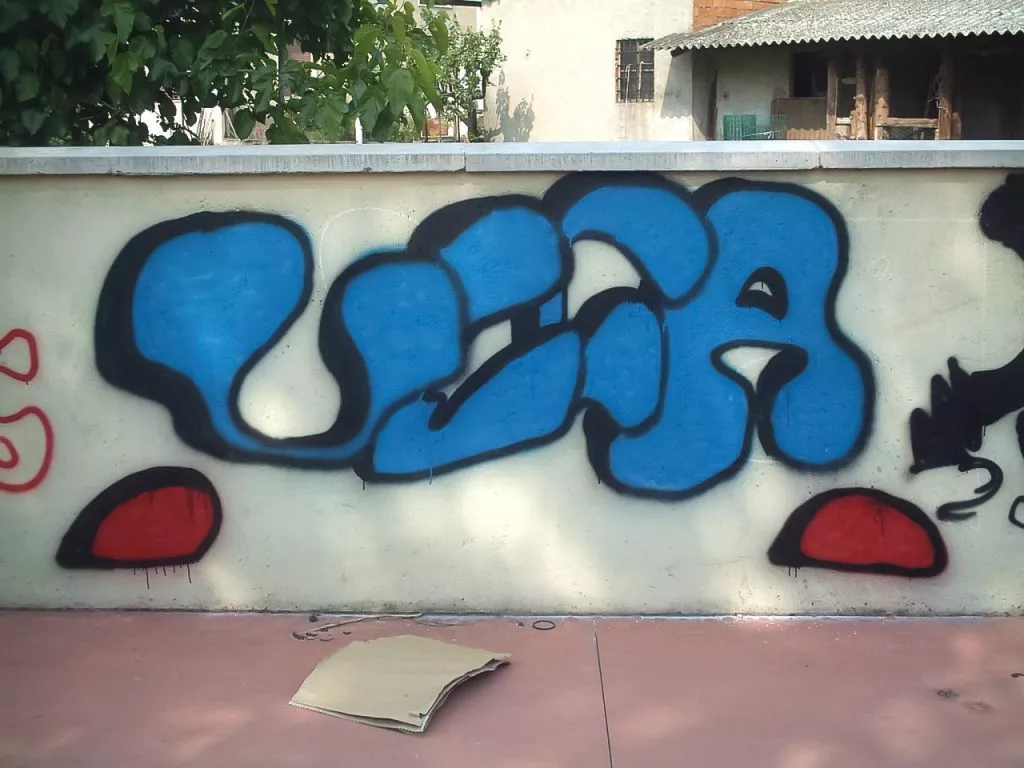
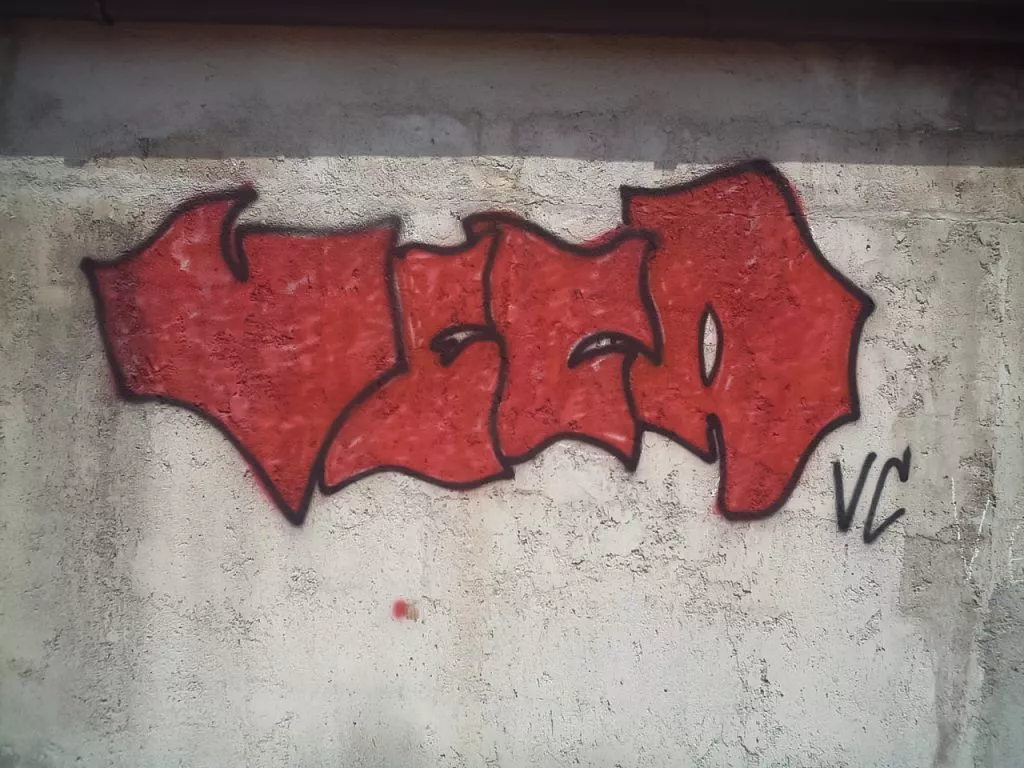
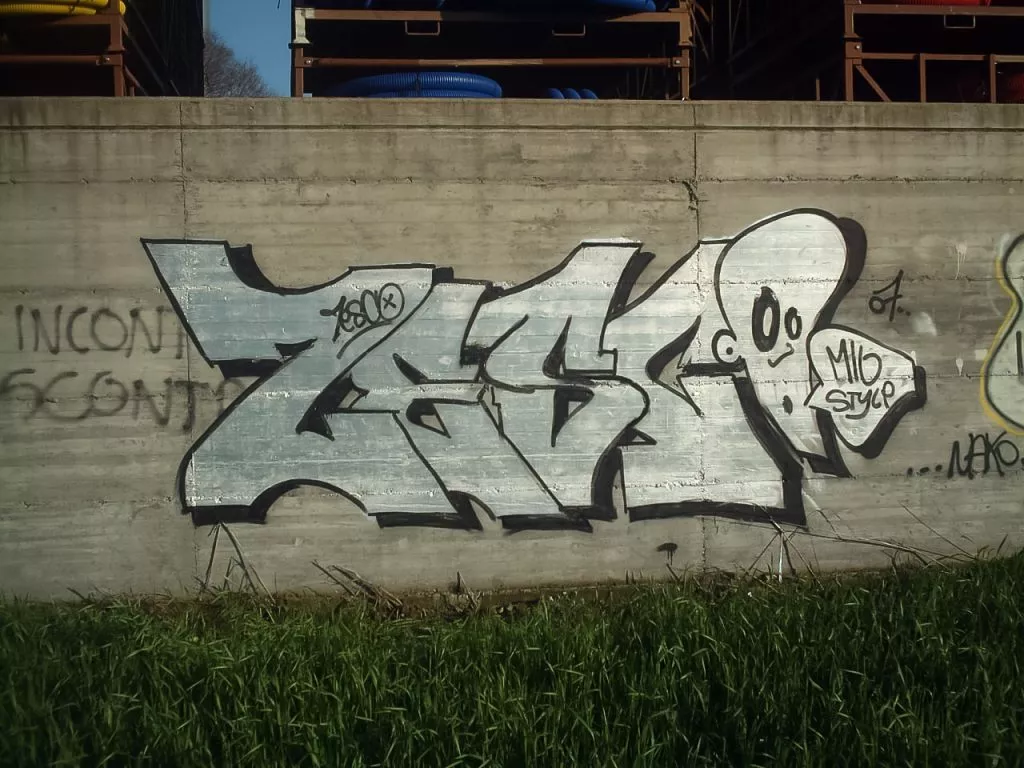
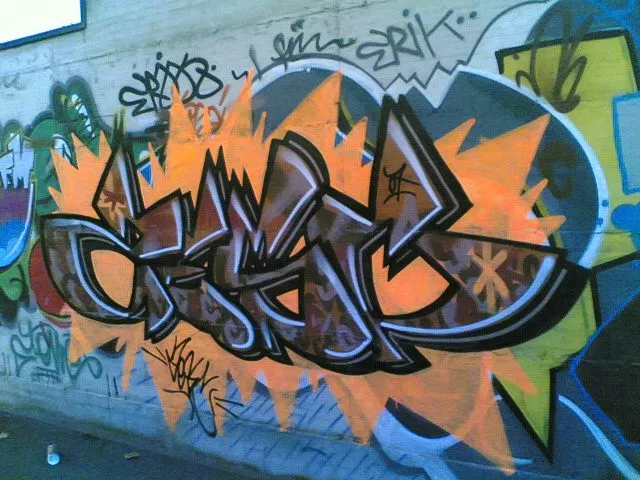
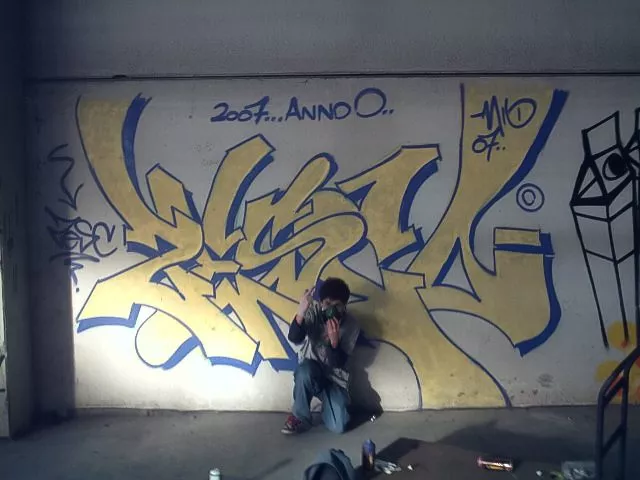
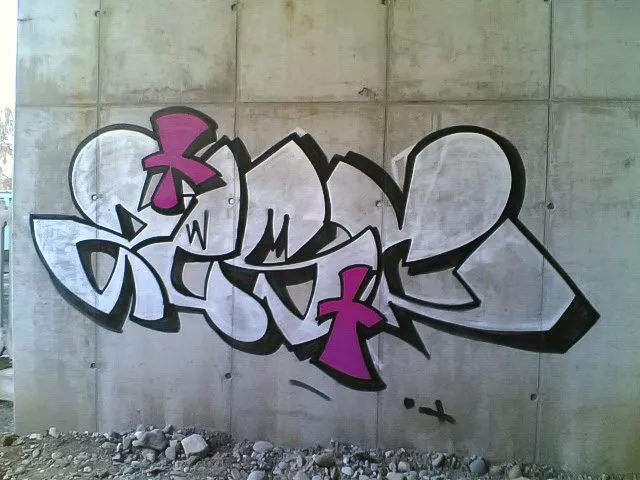
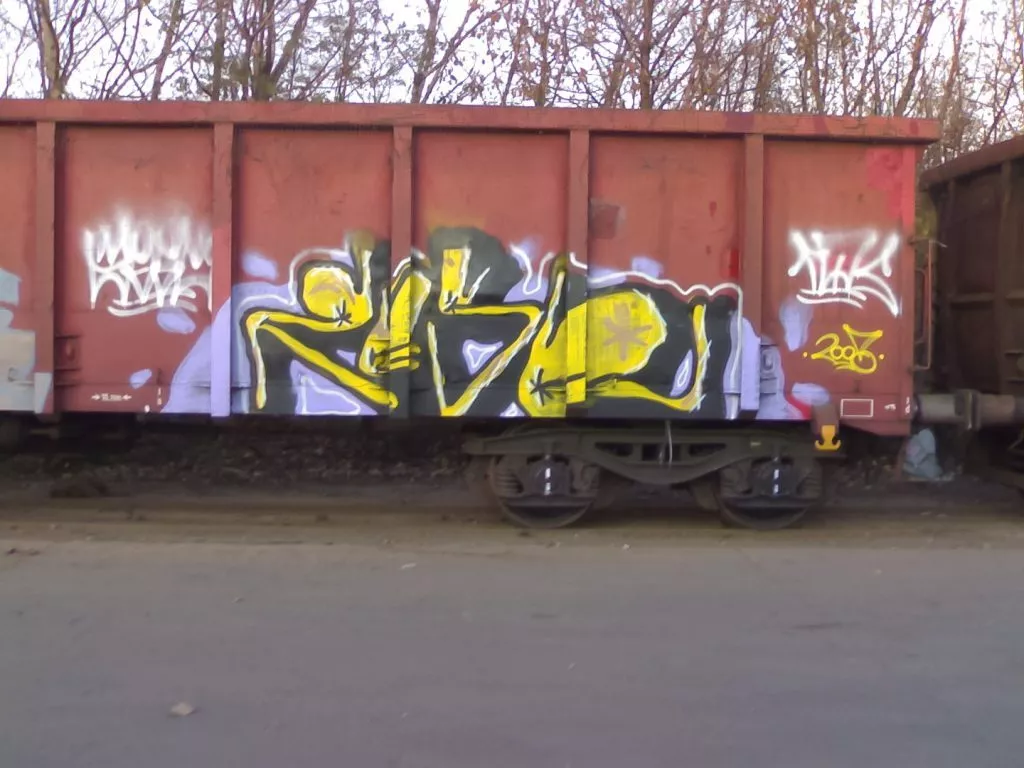
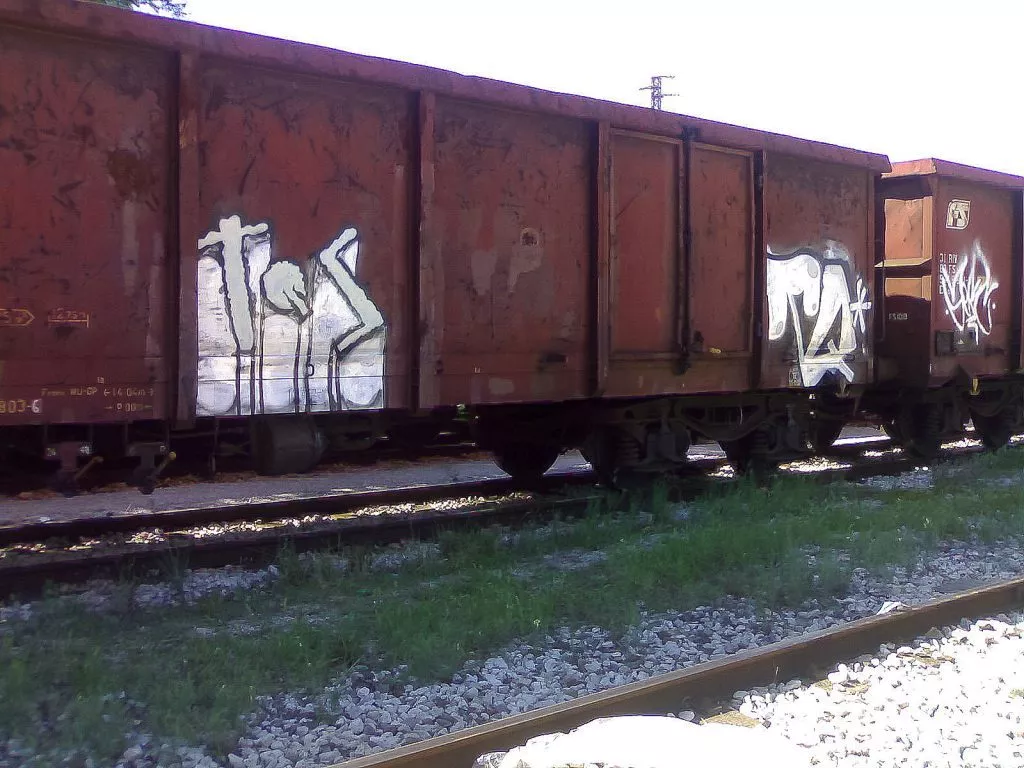
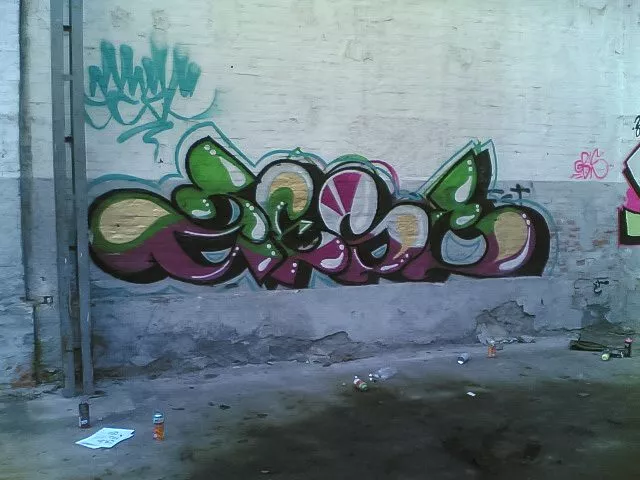
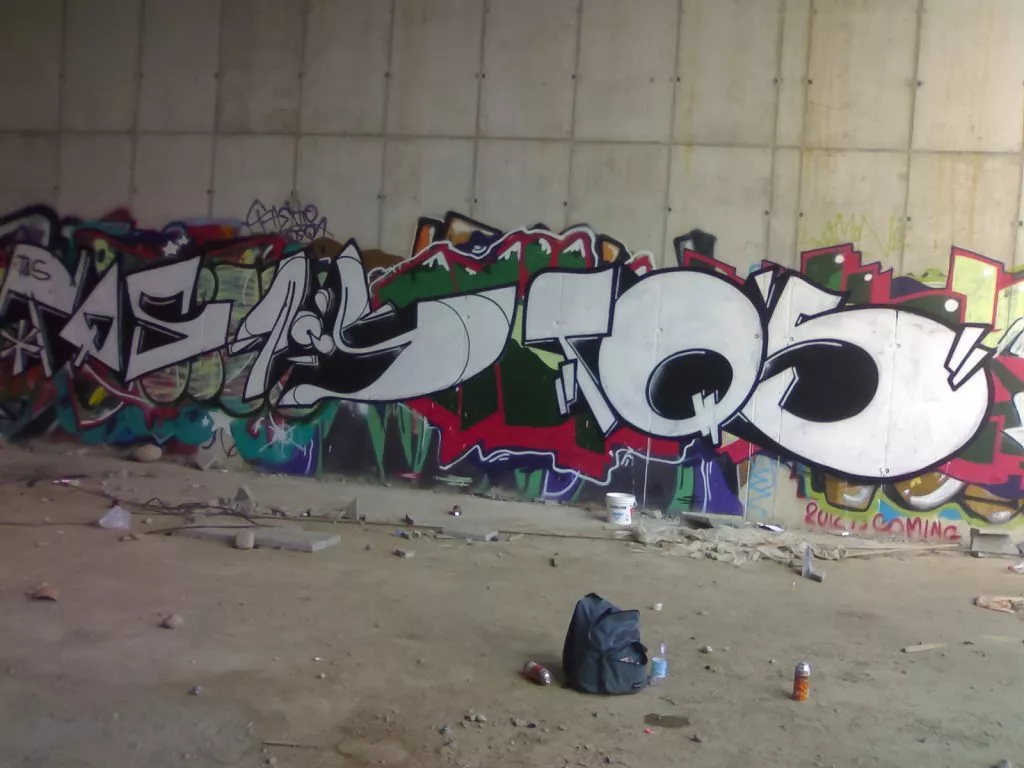
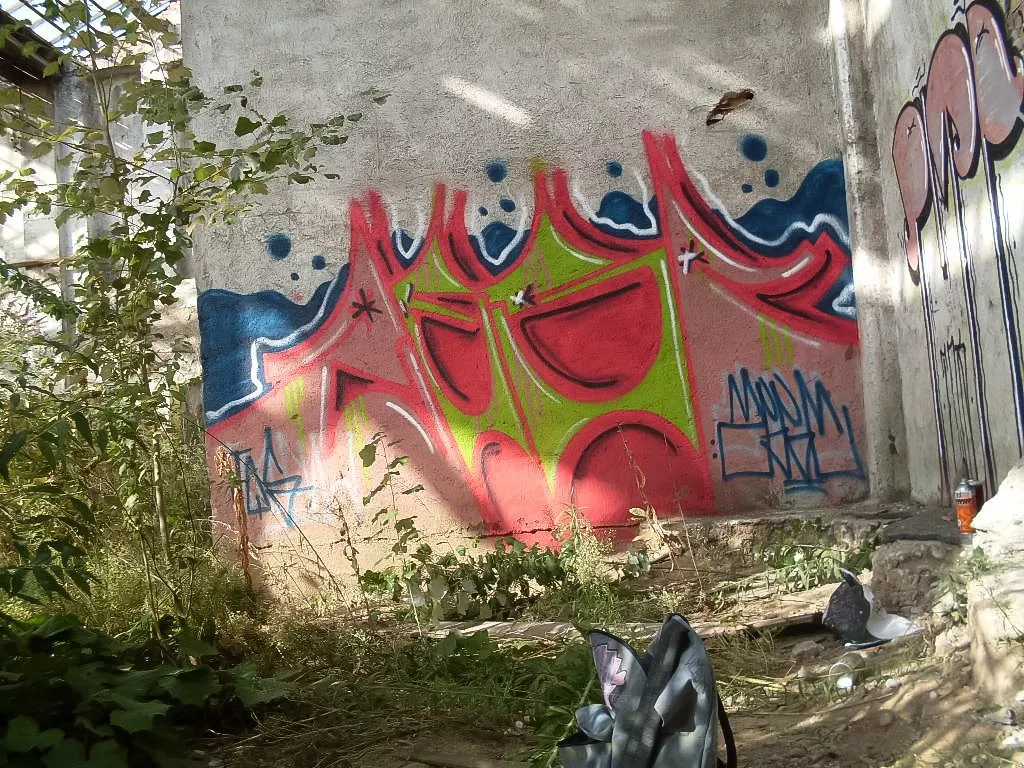
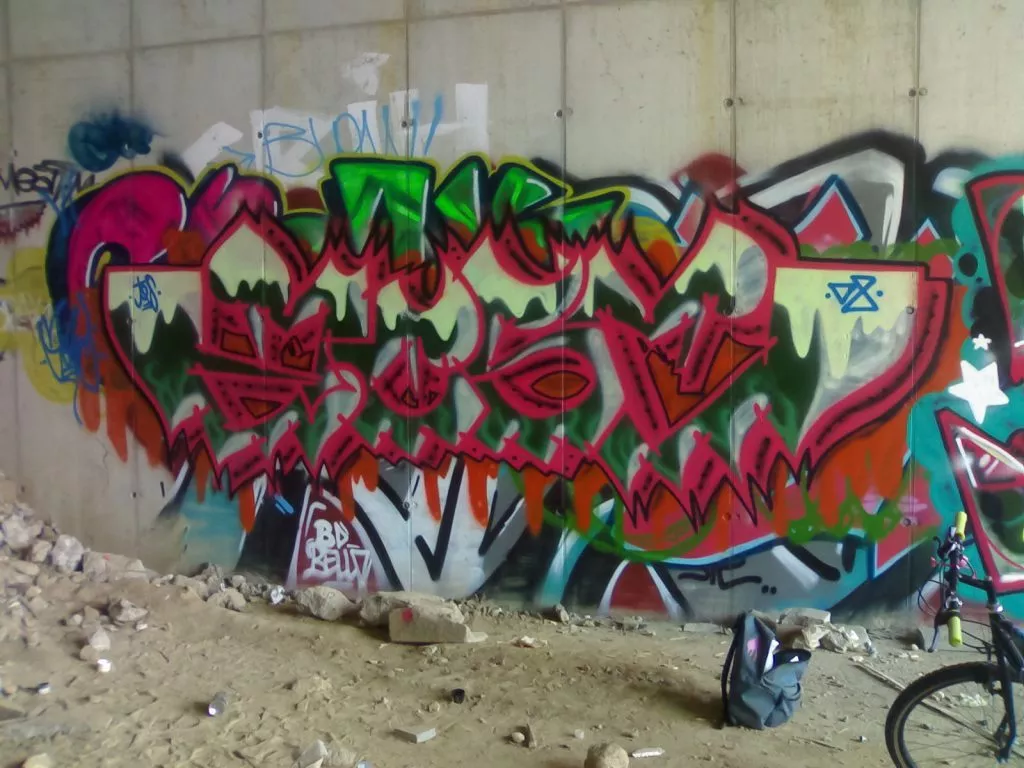
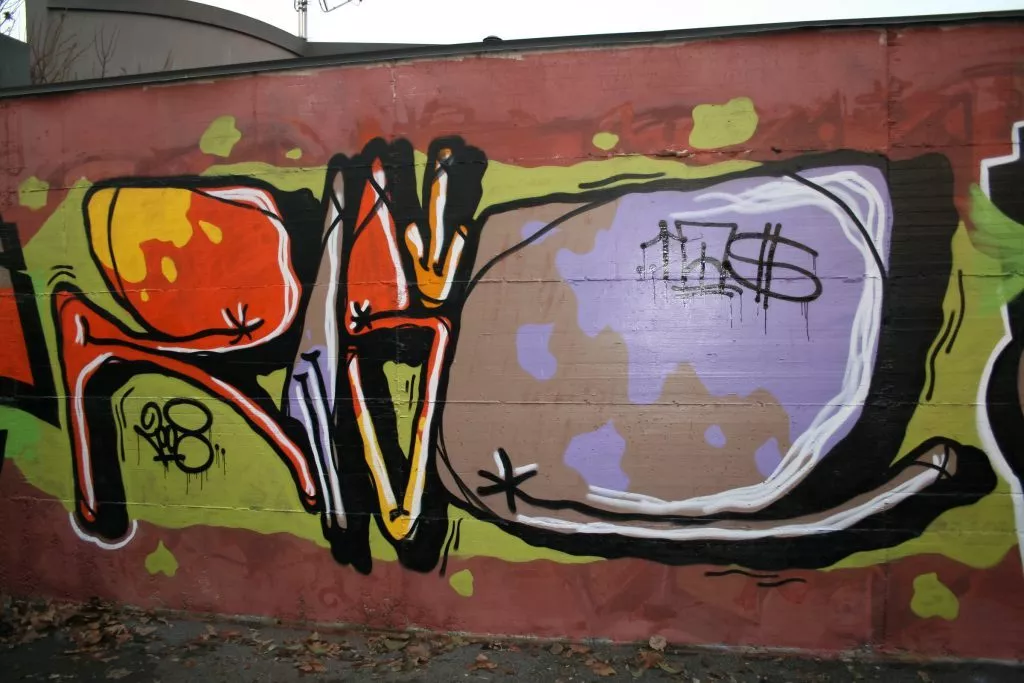

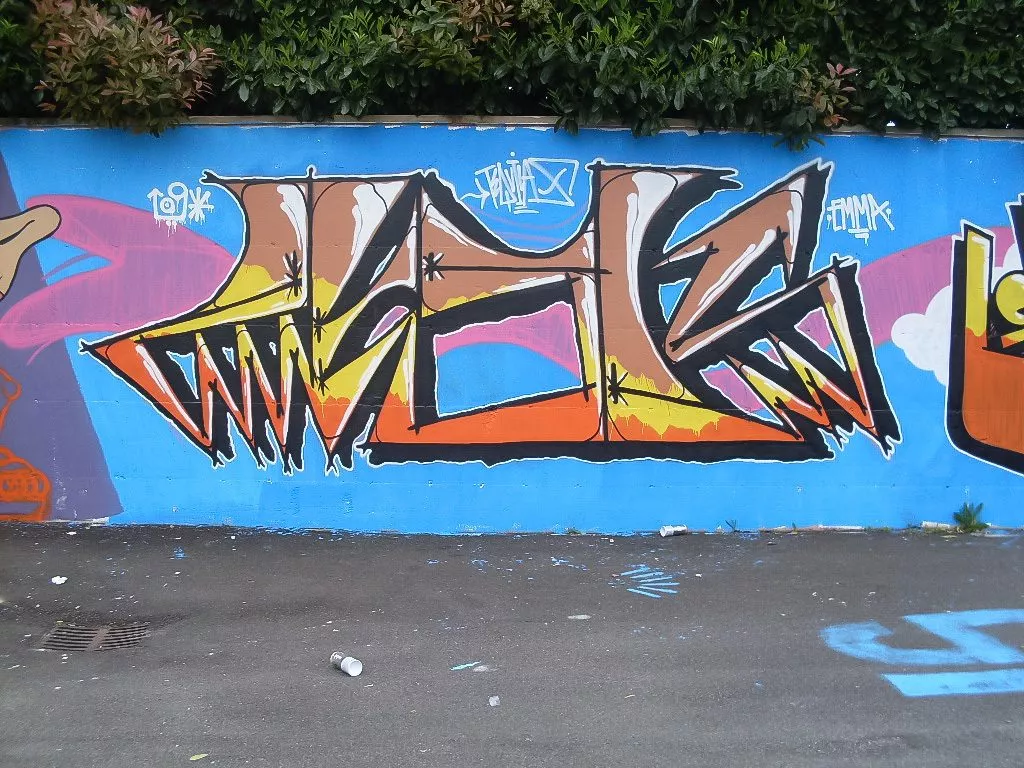
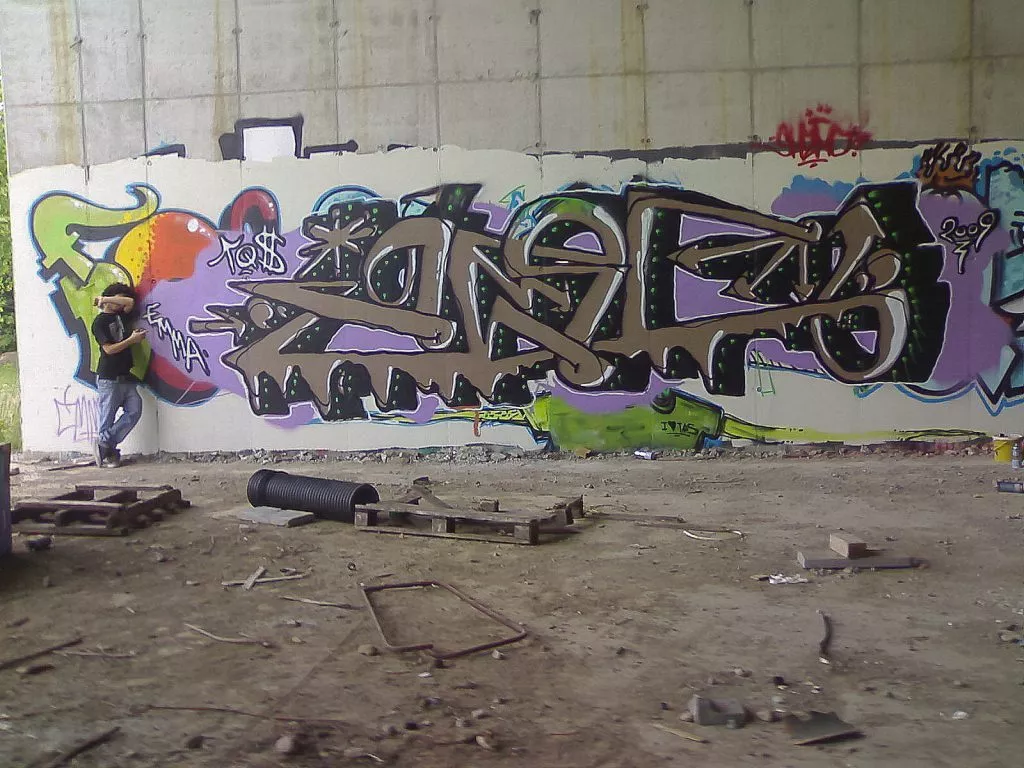
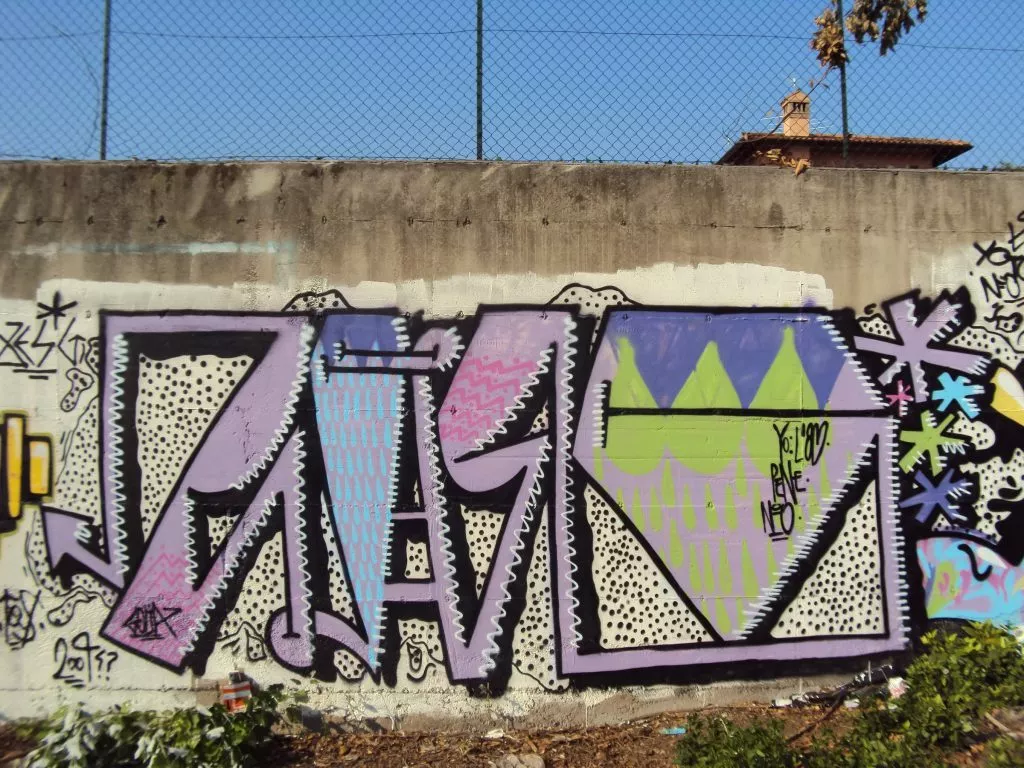
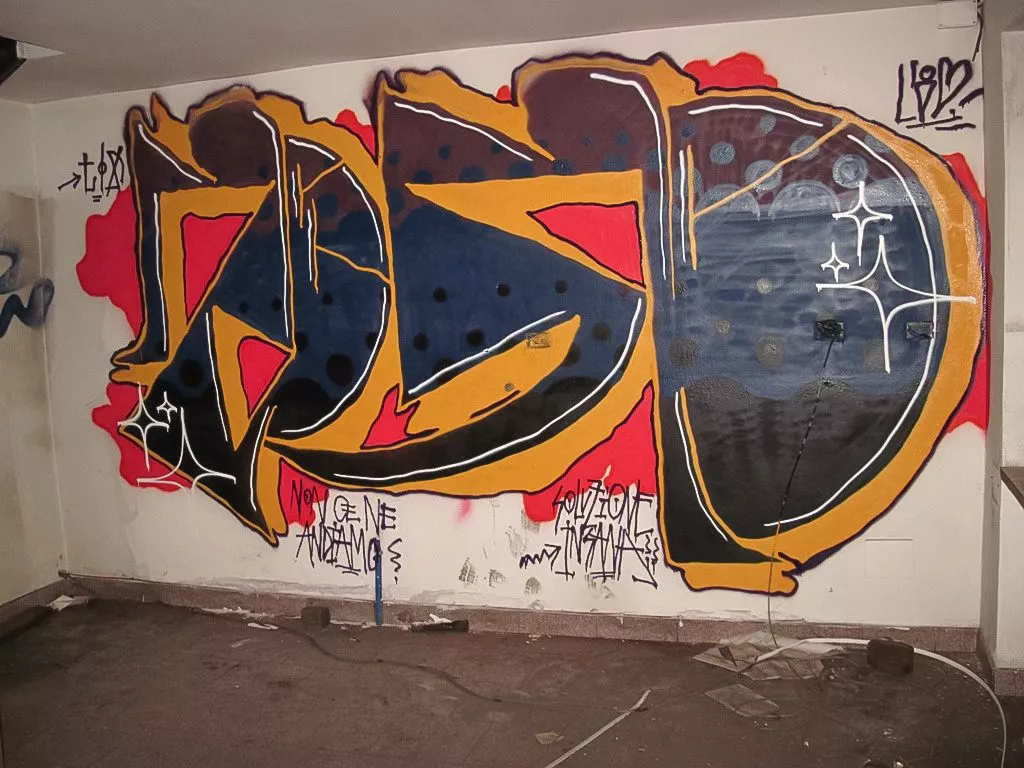
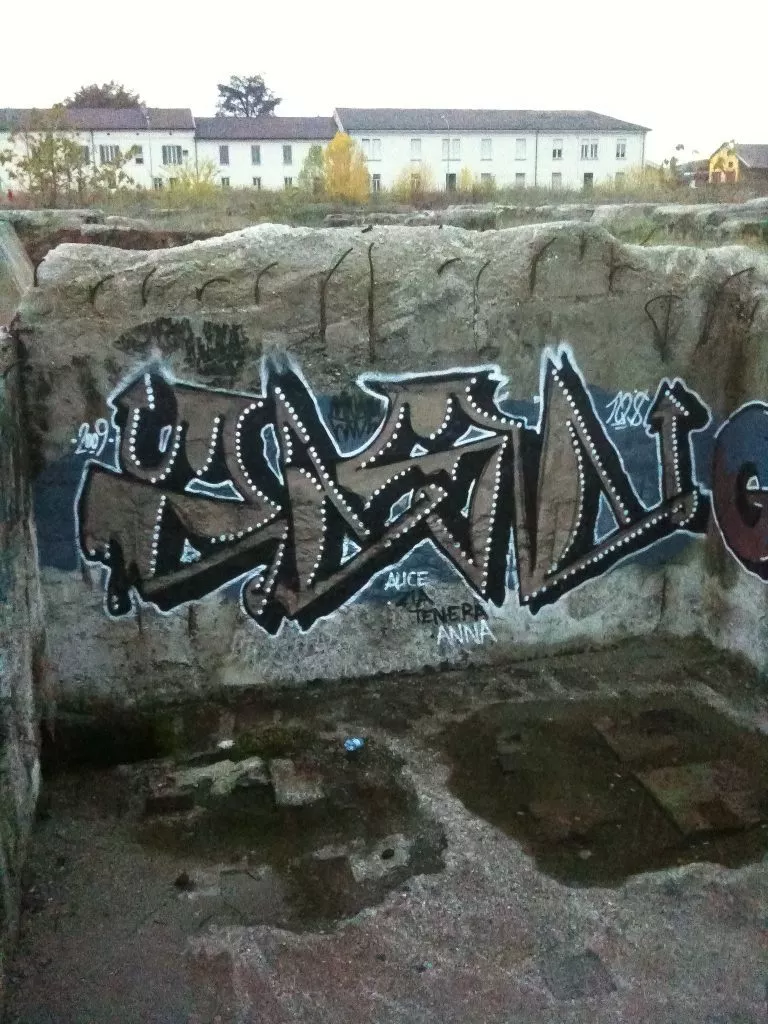
Find one’s own style
Taleggio’s style in the beginnings was inspired by wild style, but in 2009, he started to change and to combine more playfully his letter forms, connecting them with a special dynamic. Some years later, he was more and more interested in anti style. The film „Dirty hands“ from Paris, the RCV crew in his town, punk styles from Northern Europe, styles from Prague and Stockholm impressed him deeply. Ekta from Sweden, Jeroen Erosie from NL, the PAL crew from Paris, Horfee, SAEIO and TOMEK are some writers Taleggio names today as inspirational sources.
In 2014, he felt the need to simplify his letters and insert some figurative elements into his dynamics. He started using his actual name and continued to search for new shapes before finding his abstract visual language in 2016/2017. Today, Taleggio says:’ It was the best part to leave letters behind, to first simplify them, using no arrows, etc. I simply didn’t need letters any more to compose and used simple shapes and started painting from that point.“ In 2016, he moved to Milan to study architecture at the technical university Politecnico di Milano. In Milan, the graffiti scene was the most dynamic in his country, he met new writers and muralists groups there. The architectural studies influenced his style concerning the relation to space and helped him to understand painting with a new mental order, according to him, gave him novel inputs for new aesthetics. Visiting the great art collections in Milano’s museums, Taleggio discovered works of modern painters that he used to visit regularly. The futurist Giacomo Balla or the metaphysical painter Giorgio de Chirico made lasting impressions on him. But also later works of the 20th century by Jean Dubuffet, Jean-Michel Basquiat or Cy Twombly blew his mind and made him rethink his own way of painting.
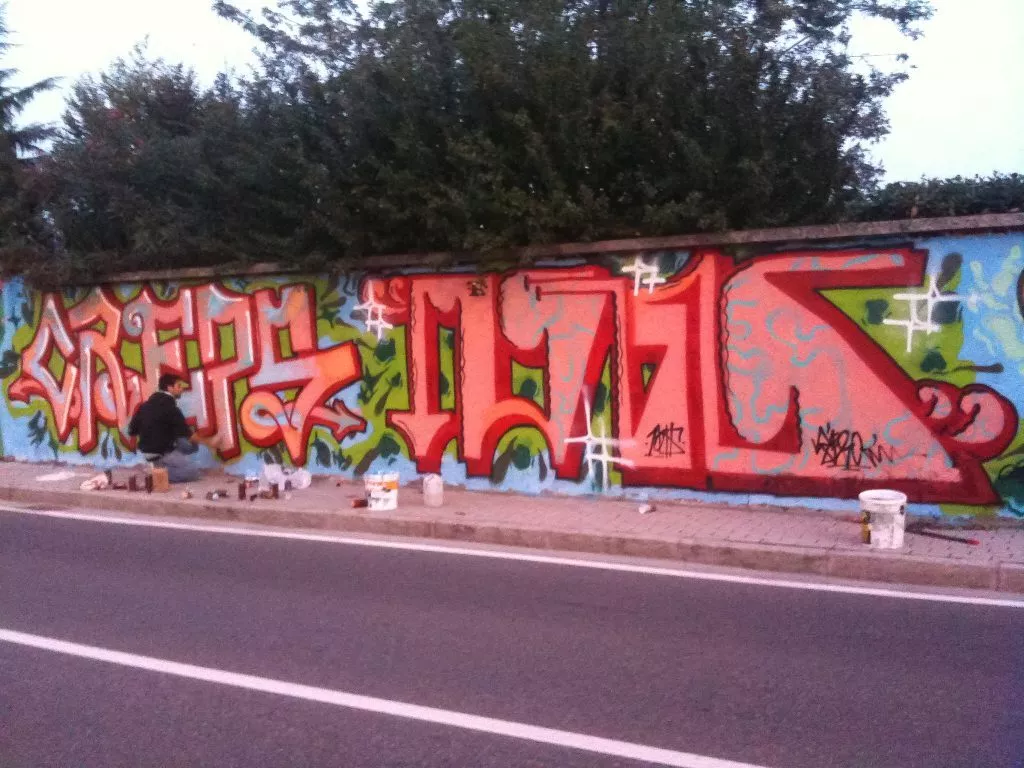
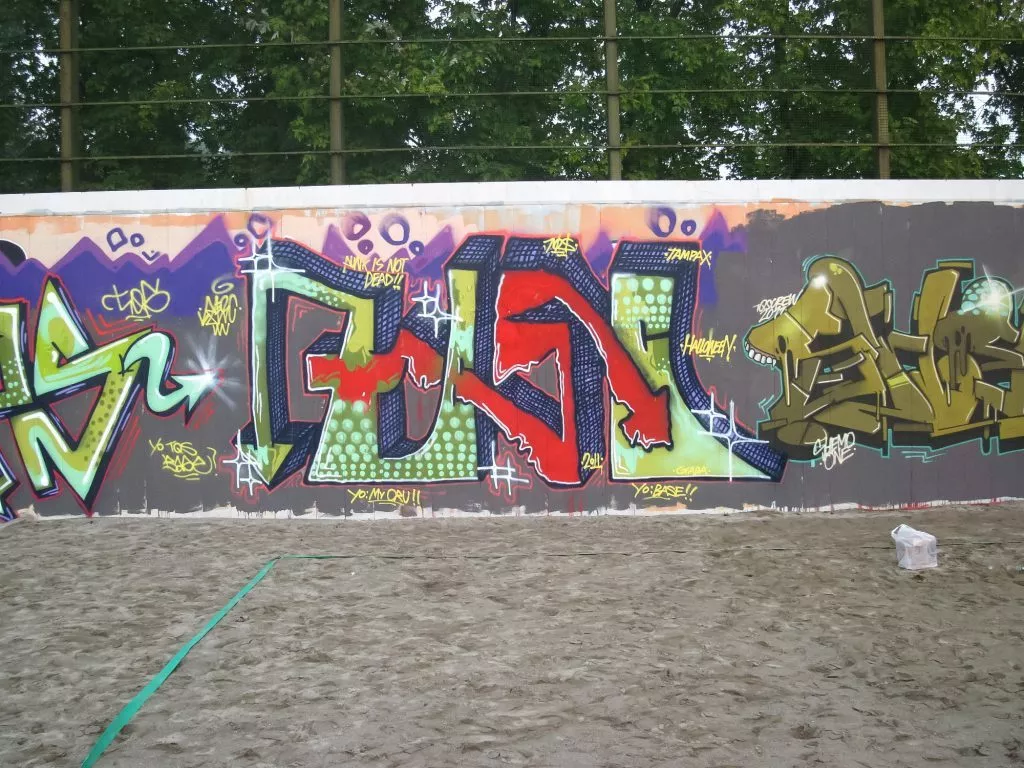
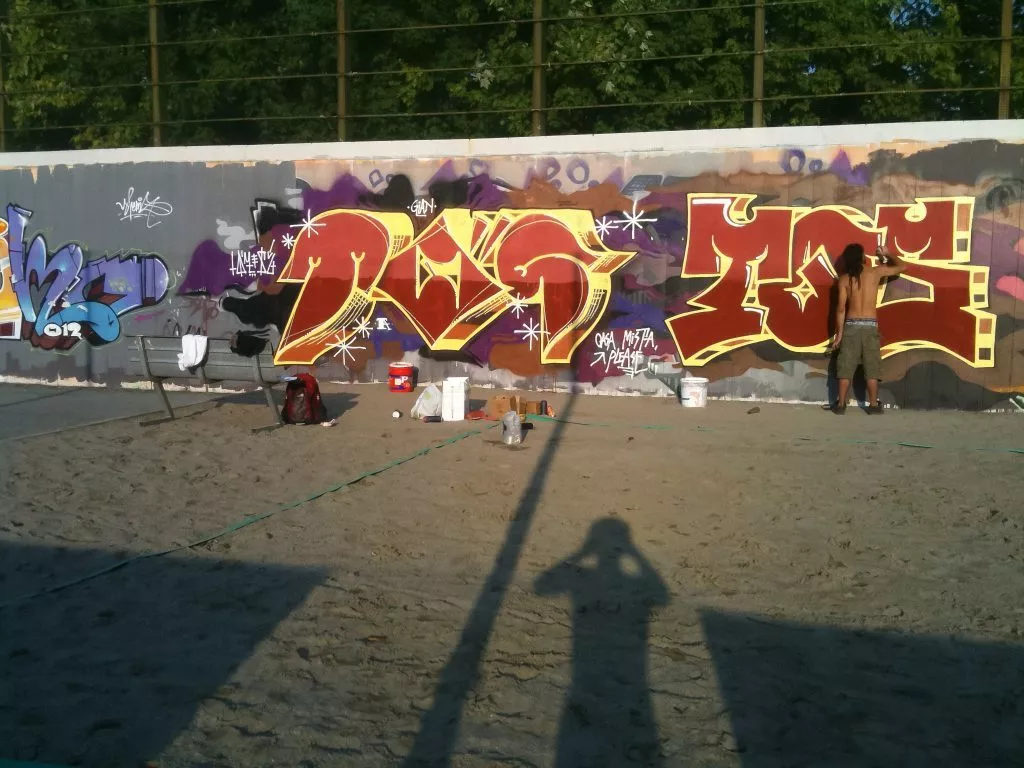
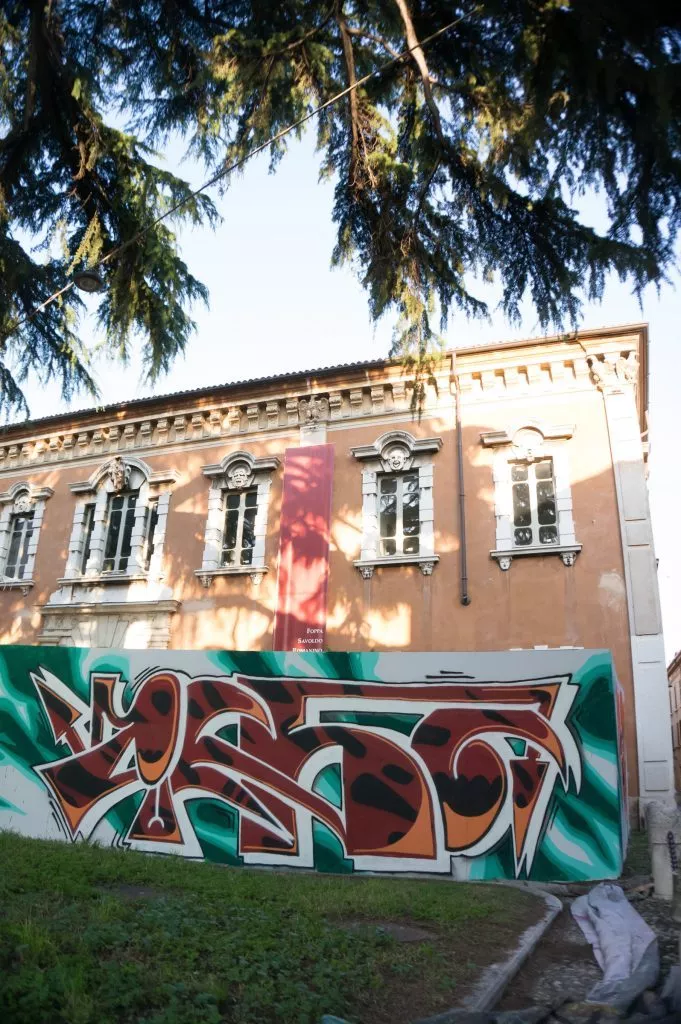
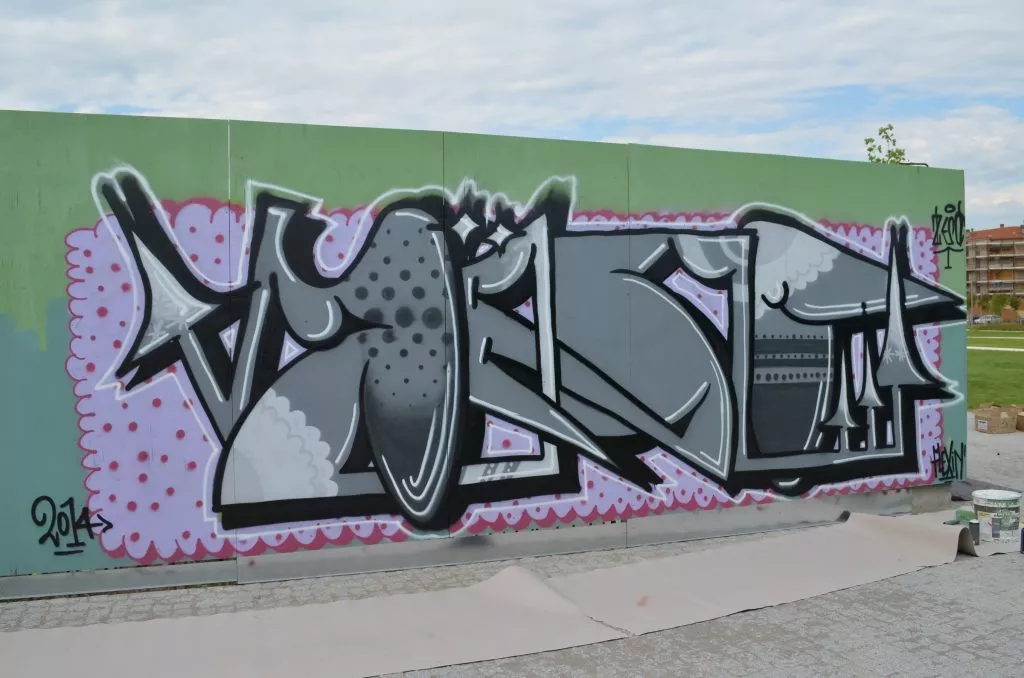


Ludic interwoven abstraction
Since 2016, Taleggio has developed an alphabet of forms that he has arranged in space, creating endless chains of interweaving, in search of a special dynamic. For this, he uses evolving abstract shapes, surfaces, simple uneven geometric forms, patterns and lines. In his compositions an element is never equal to another, superposed, juxtaposed in a playful way, he creates movement and with contrast, colours and movement expressive joyful works where the painting decides for him during the freestyle process, he says.

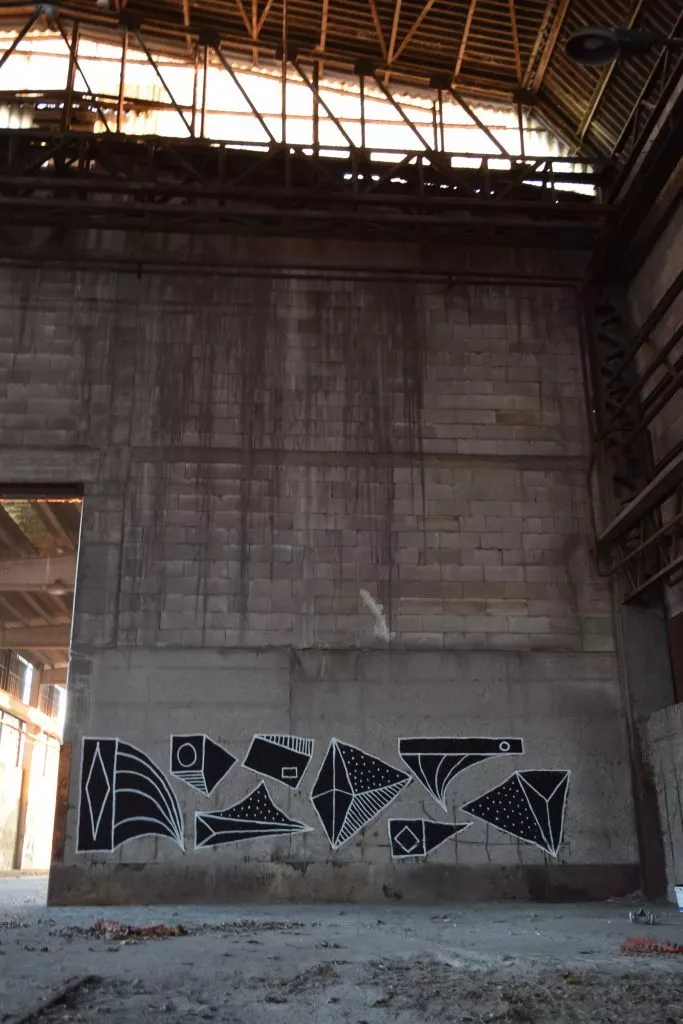
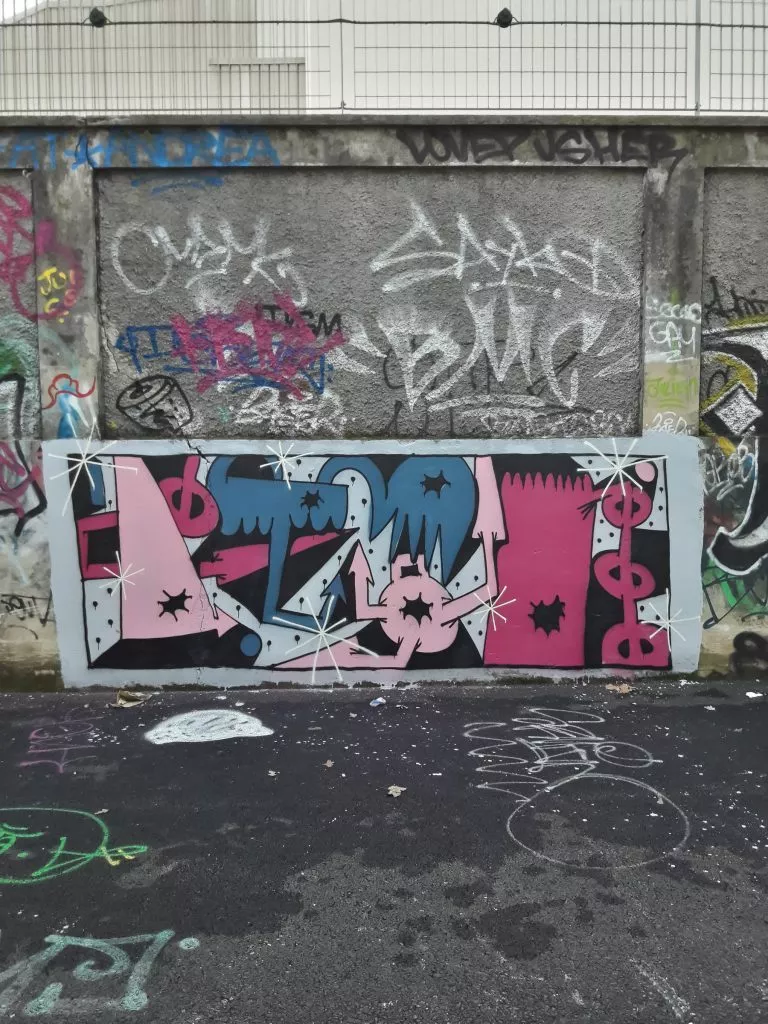
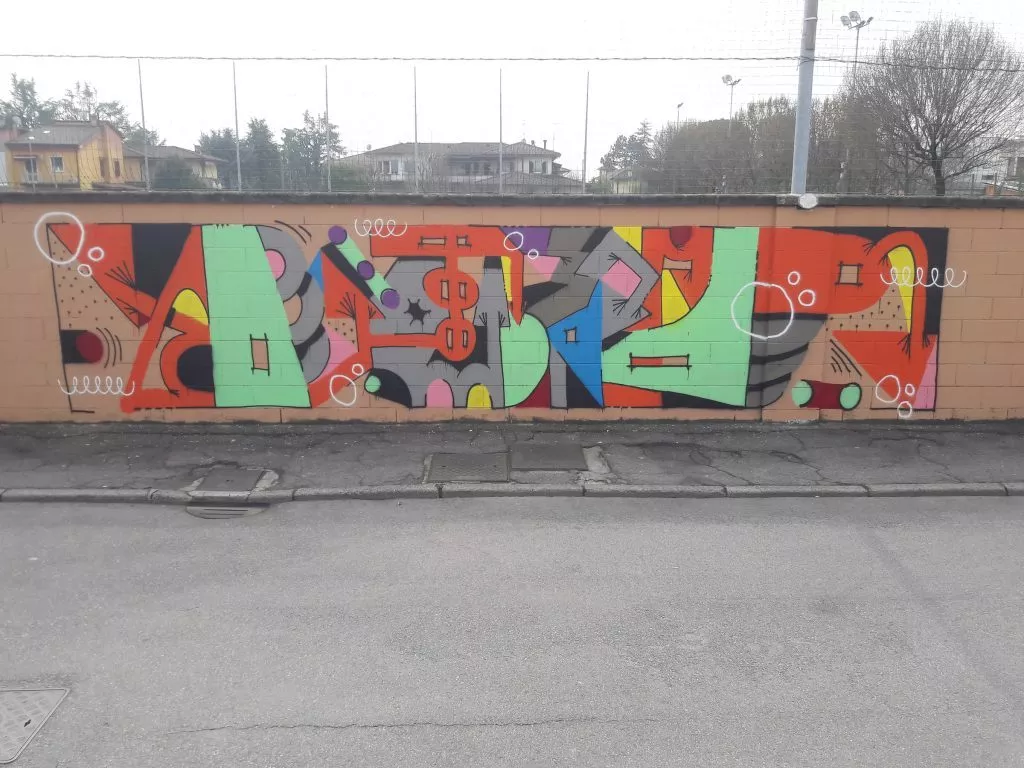
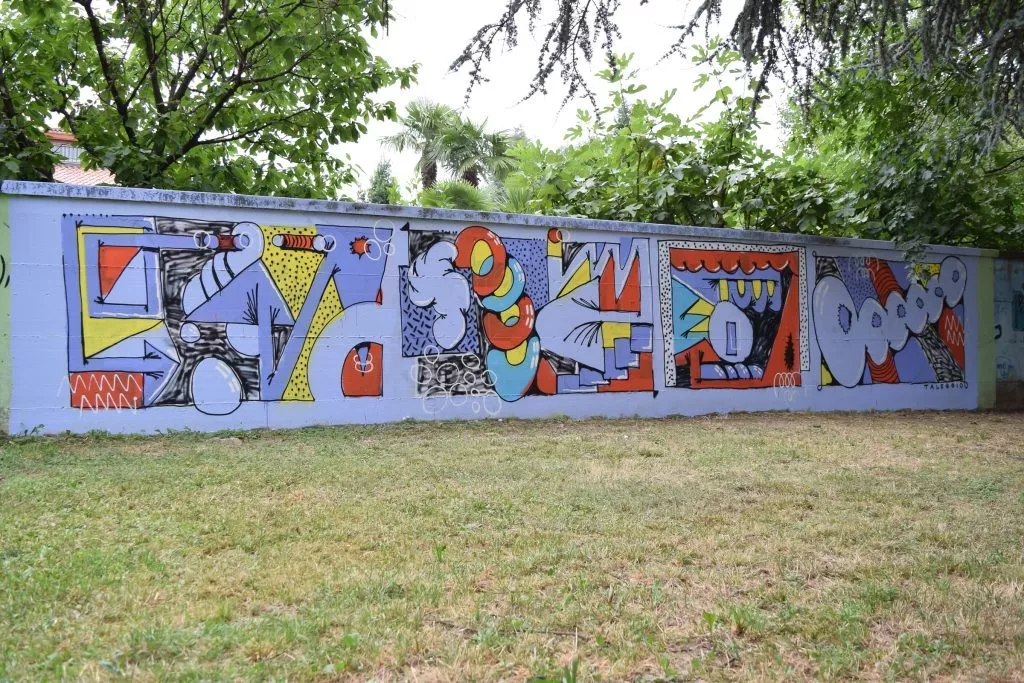
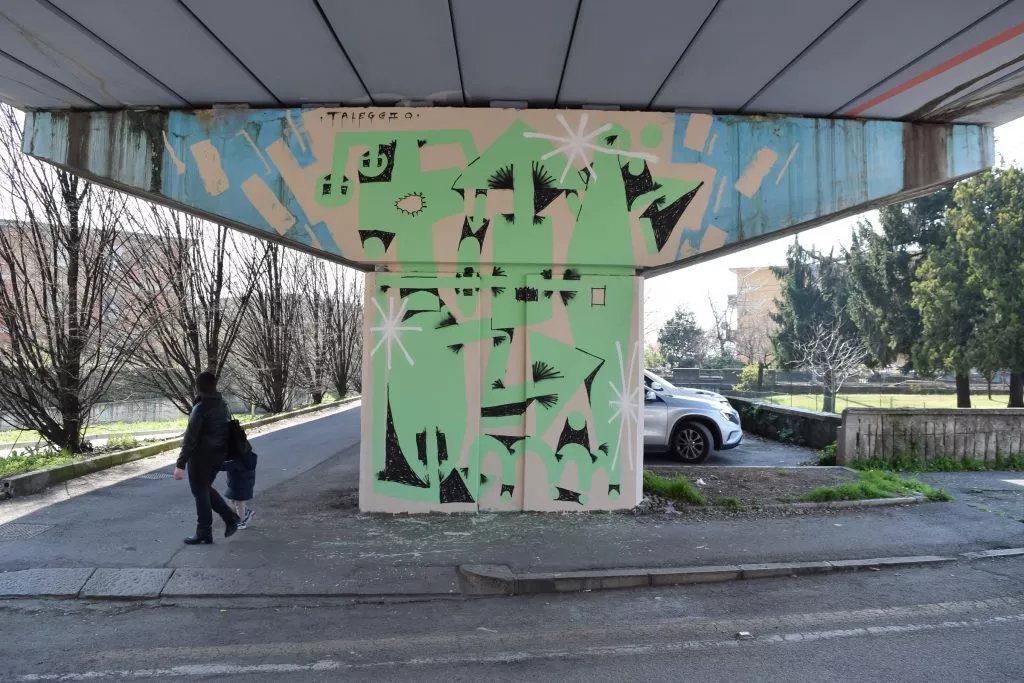
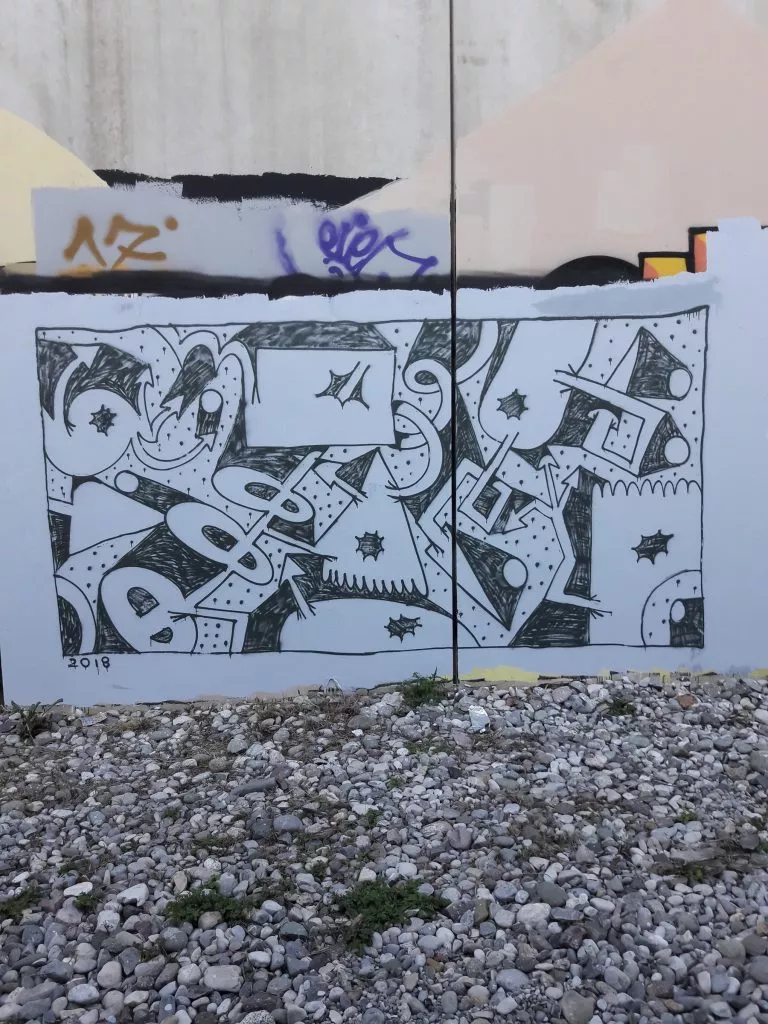
Sketching got more important for his abstract work than when he painted letters. Never copying his sketches on walls, he just uses his sketchbooks to look for particular motions and takes some elements of some sketches for new wall paintings. There he mainly works freestyle, deciding in the process of painting how to evolve. Today he uses the spray can as little as possible, applying wall paint with rollers and brushes. His works got more colourful over the years, still loving greyscale for starting – his comfort zone, with warm and cold grey tones- he adds step by step different colours. Choosing spontaneously three to five colours, Taleggio usually adds some more colours at the end with leftovers to fit. Some years ago his pieces had more lines and no round shapes, but in the last two years, he discovered the round shape for his work, playing with it in diverse manners. Normally he starts with two, three lines, puts uneven shapes on it, adds more and more simple forms to the composition, in a freestyle way, and as he says, at a certain moment the painting decides its turn in the process. All of Taleggio’s wall paintings have a common dynamic, mostly expanding horizontally, with a certain rhythm and joy. He still calls them a piece, even if abstract, because according to him the mental approach is still the same as for a graffiti piece even if he stopped lettering.
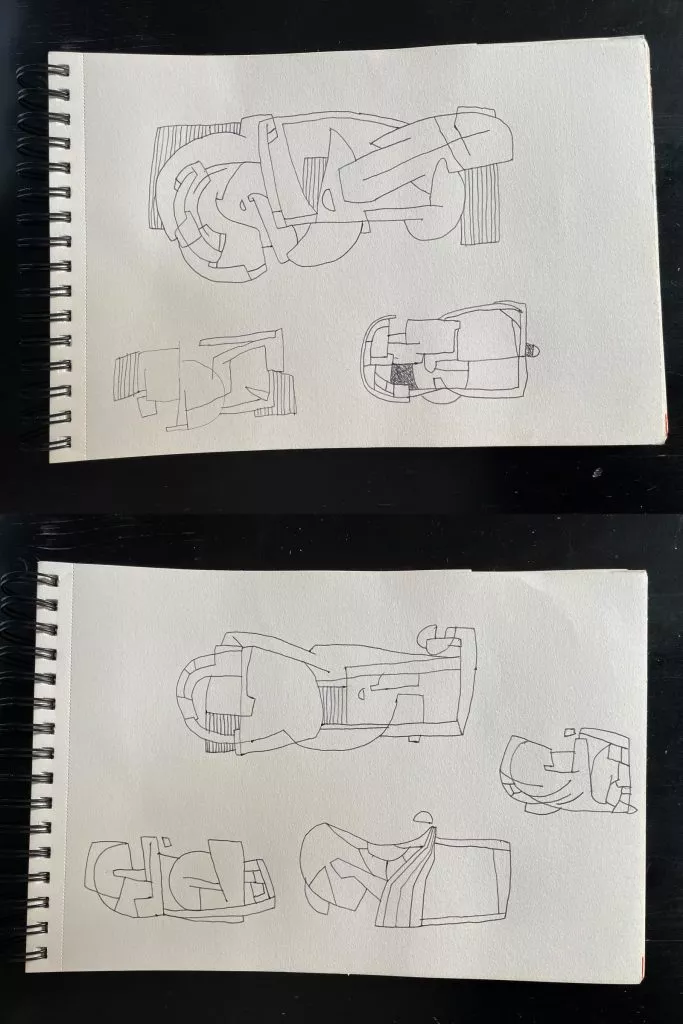
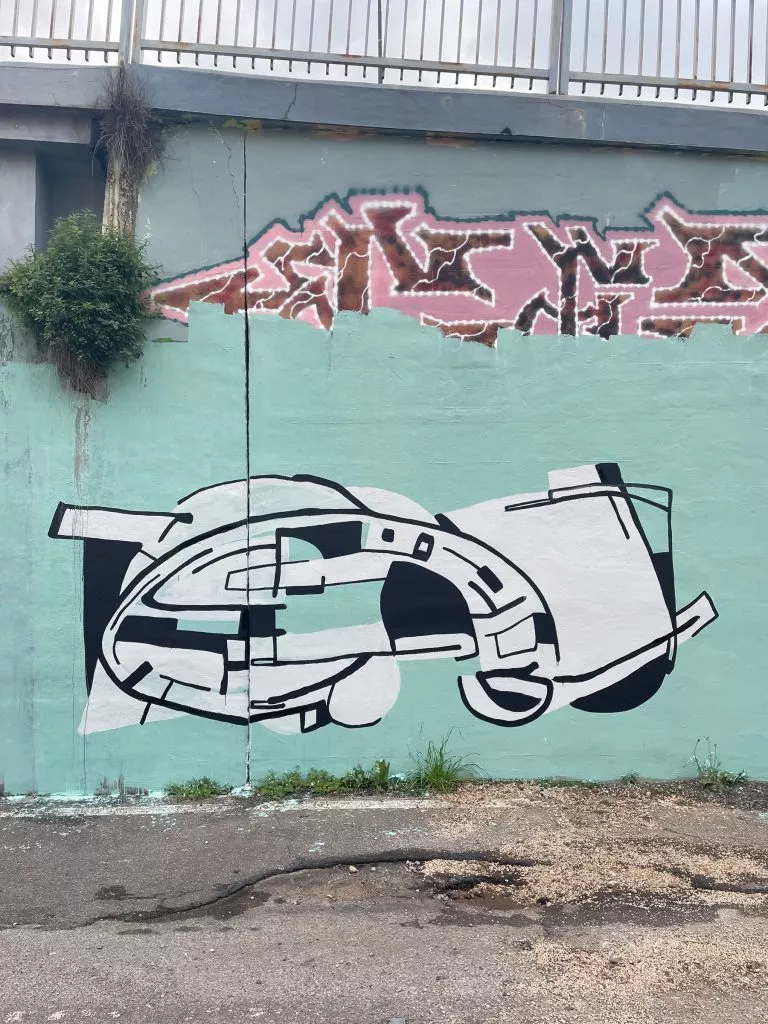
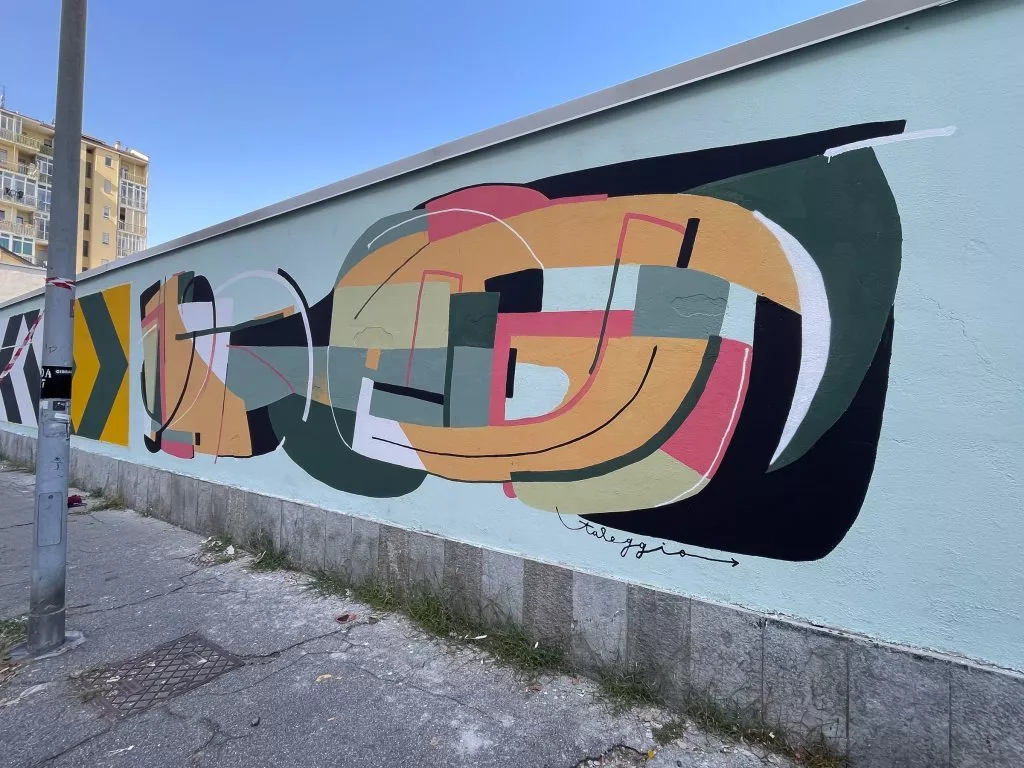
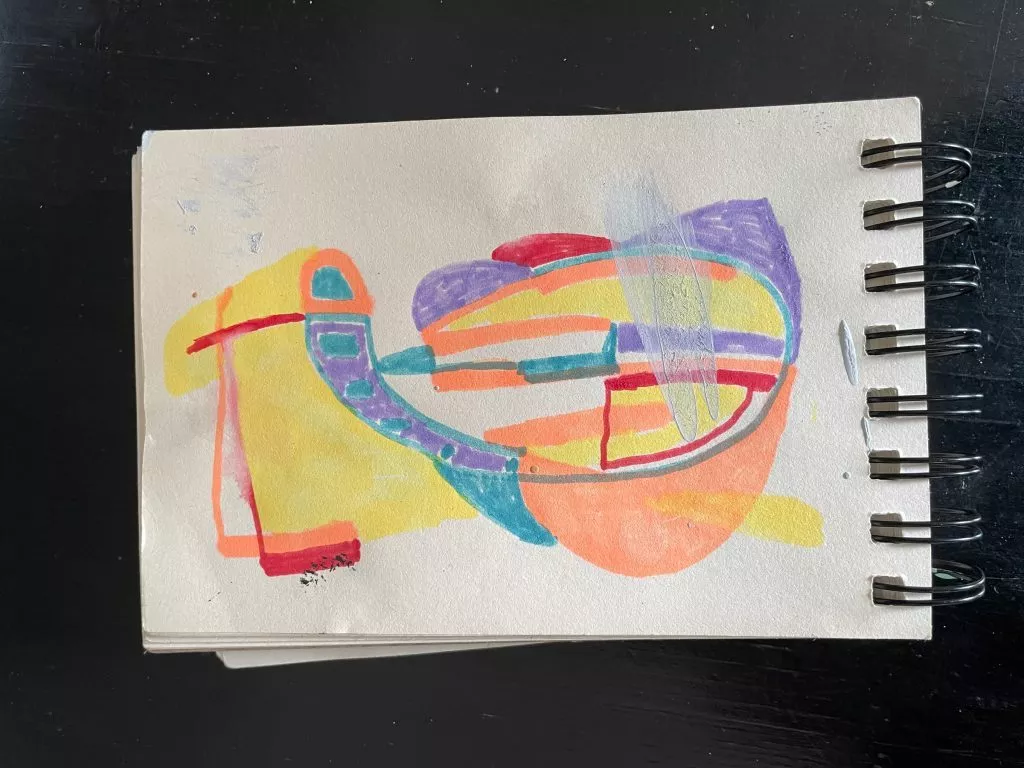
Studio practice and beyond
In his studio, Taleggio works differently. For his paintings, he normally starts one work after the other. But since last year he works on new series and paints several canvases at the same time. It is for him the only way to keep going with the same approach. Working with brushes, rollers, airbrush, mural paint, acrylics, oil pastel and solid marker, he uses mixed media on canvas, wood panels and paper. Often he needs to look at it for a long time to find the next steps to get the right balance and dynamic in a composition. Sometimes he needs days, sometimes weeks or even months passes before finishing a canvas. His mind and opinion can change during the process, he sees different layers and is willing to change the shapes reflecting his feelings in that moment. For all of his paintings, The Italian painter is looking for a balance or better imbalance, thus creating tension and dynamics. From time to time, he even destroys some balances in his abstract compositions, creates „a mess“ and then has to fix it in a new order. For him an abstract painting is finished when the whole structure becomes a kind of character, even if non-figurative, Taleggio always recognizes the pieces as a thing, an object or a character.
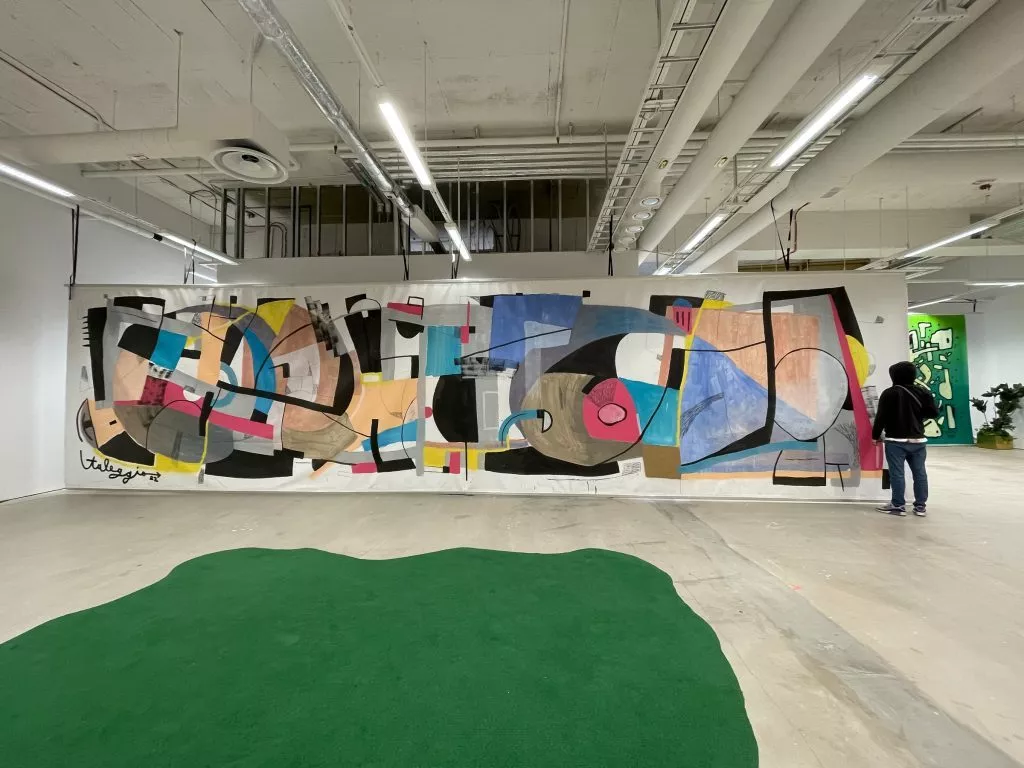
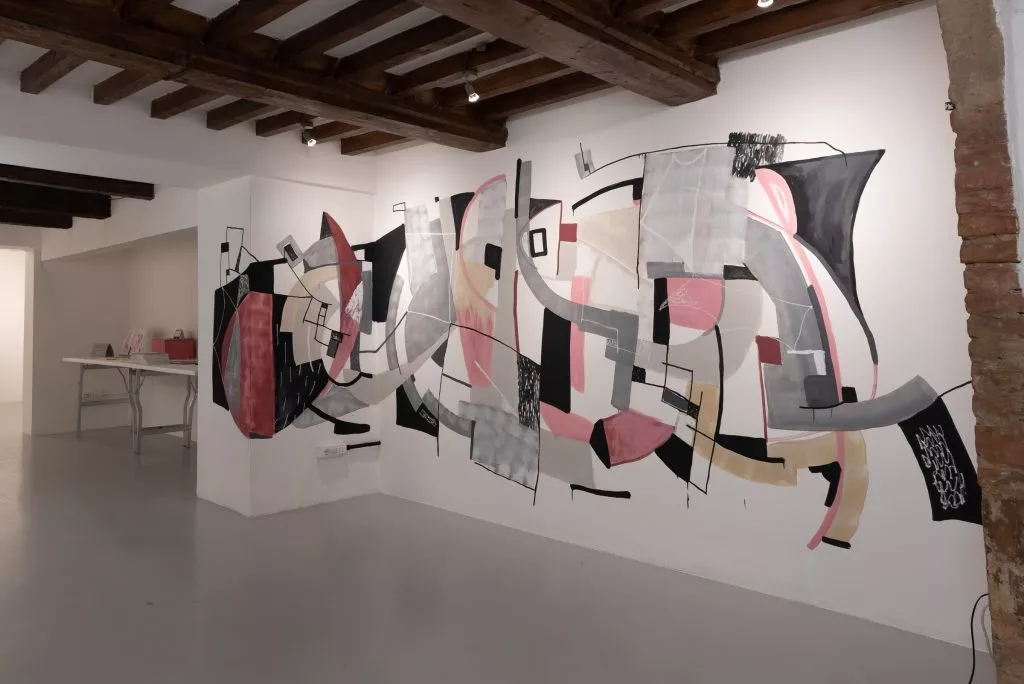
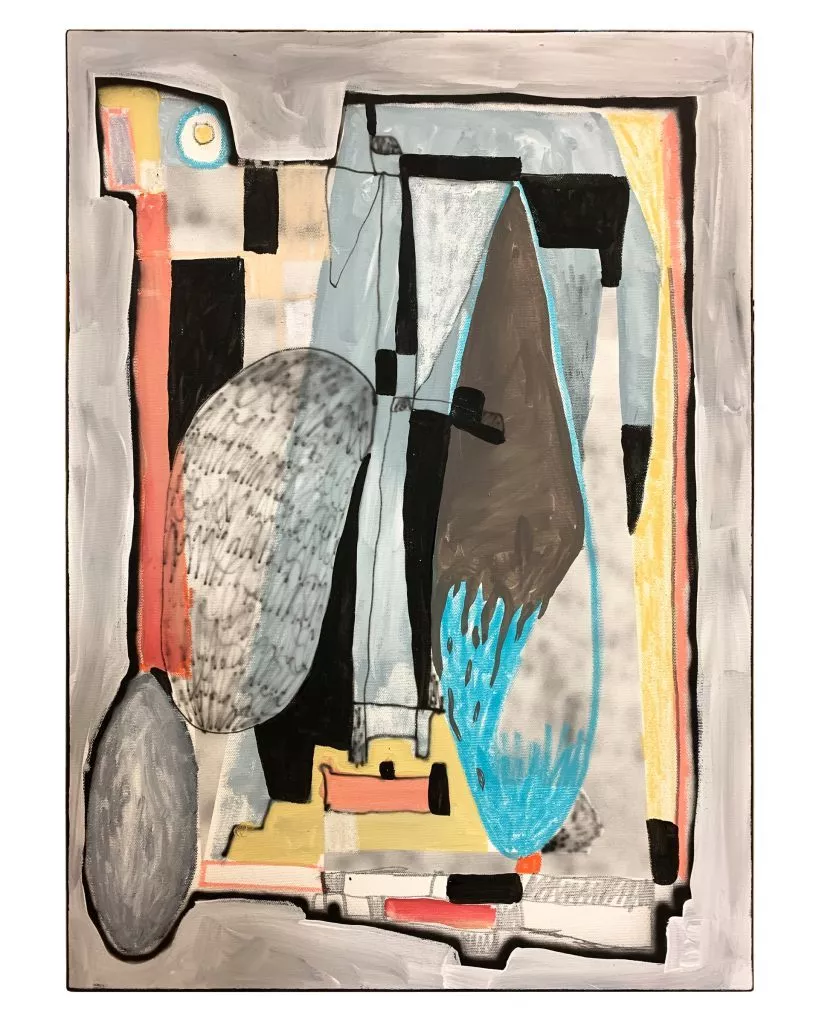
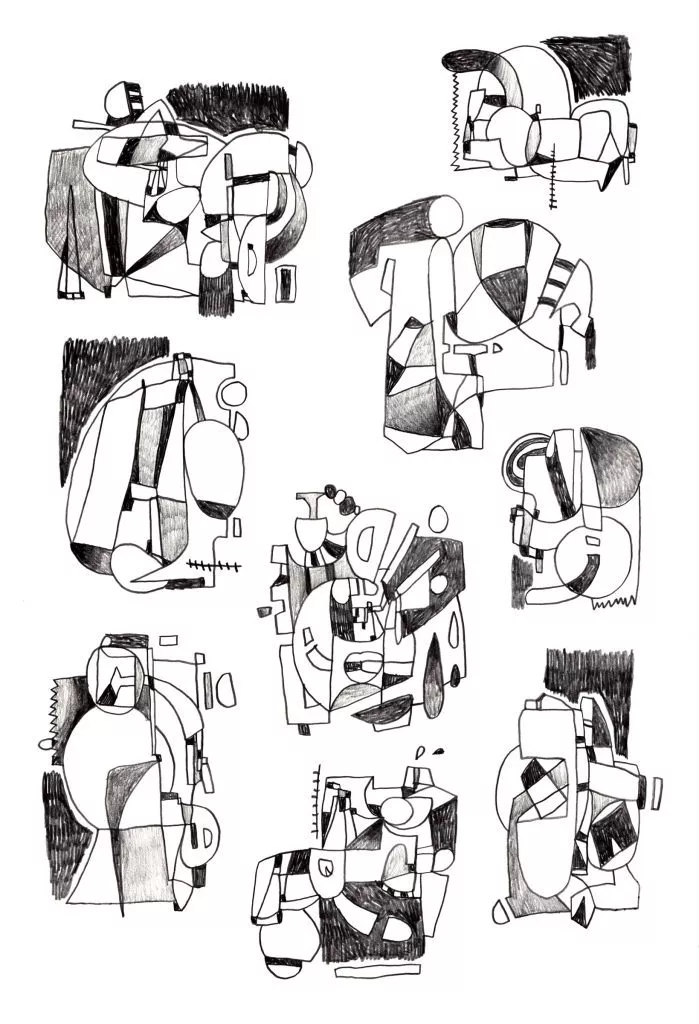
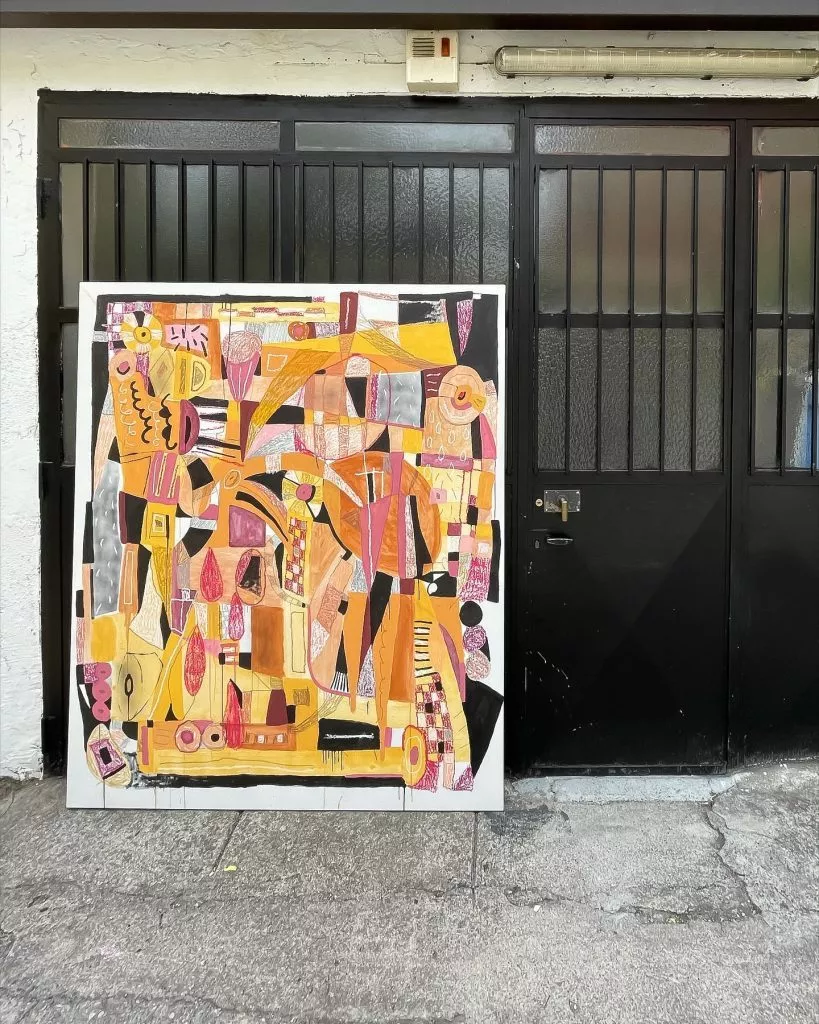
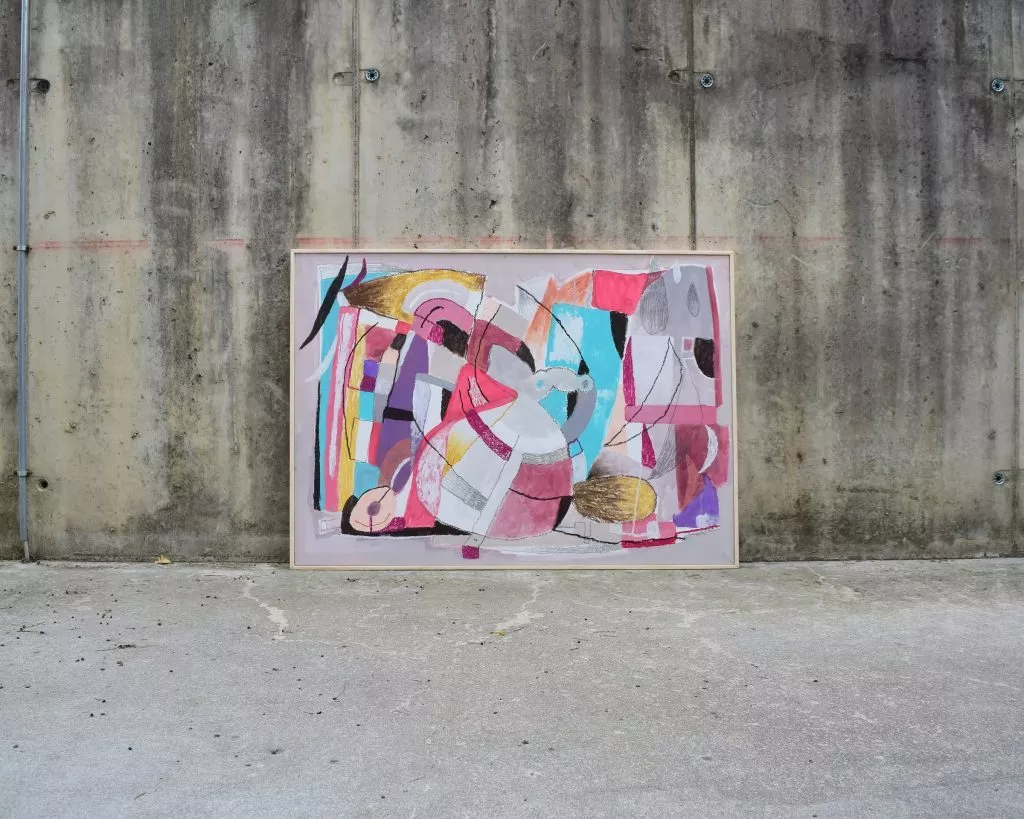
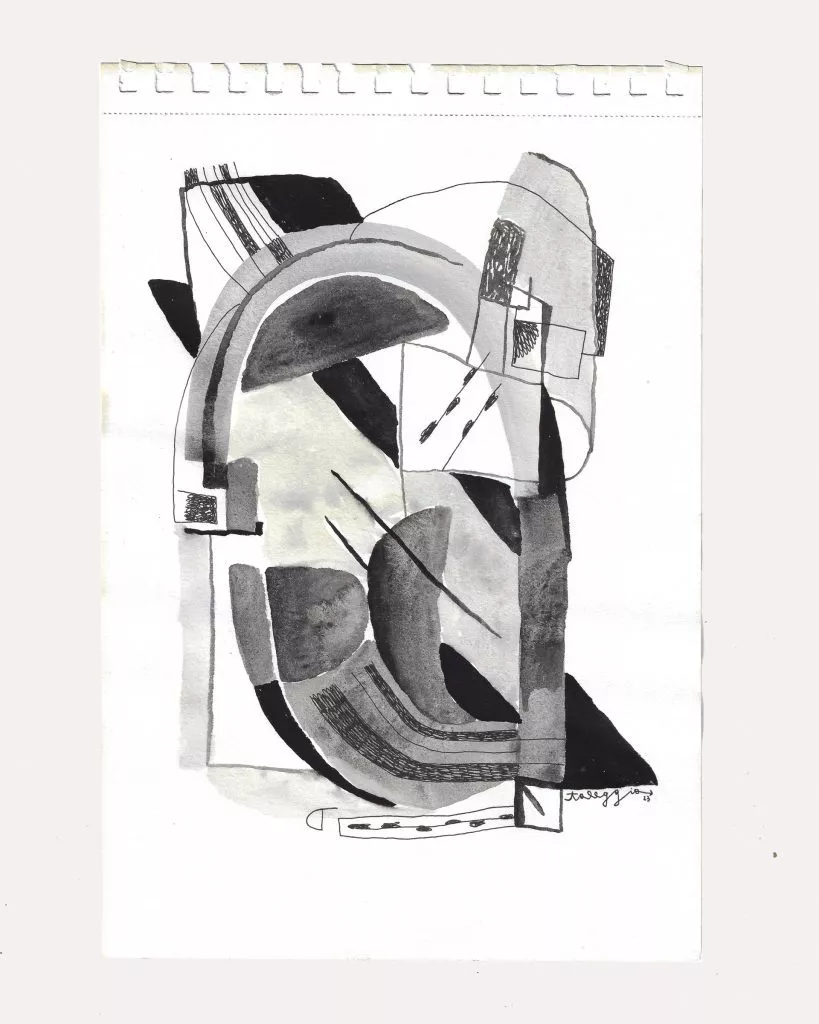
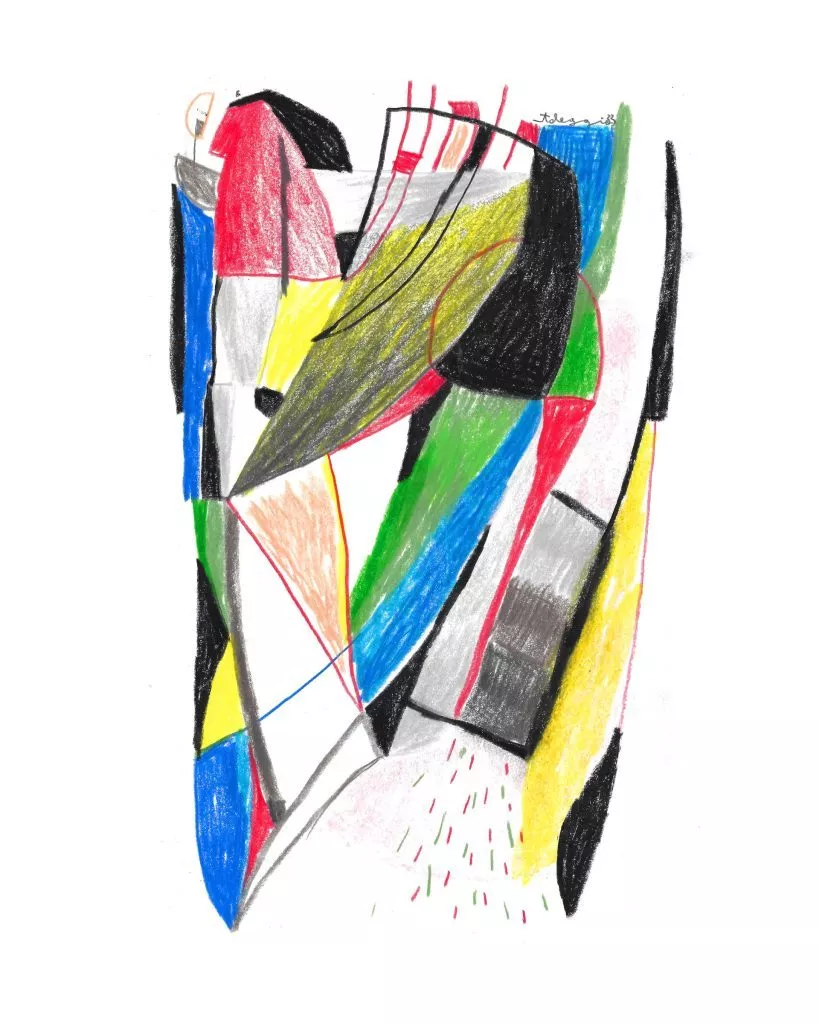
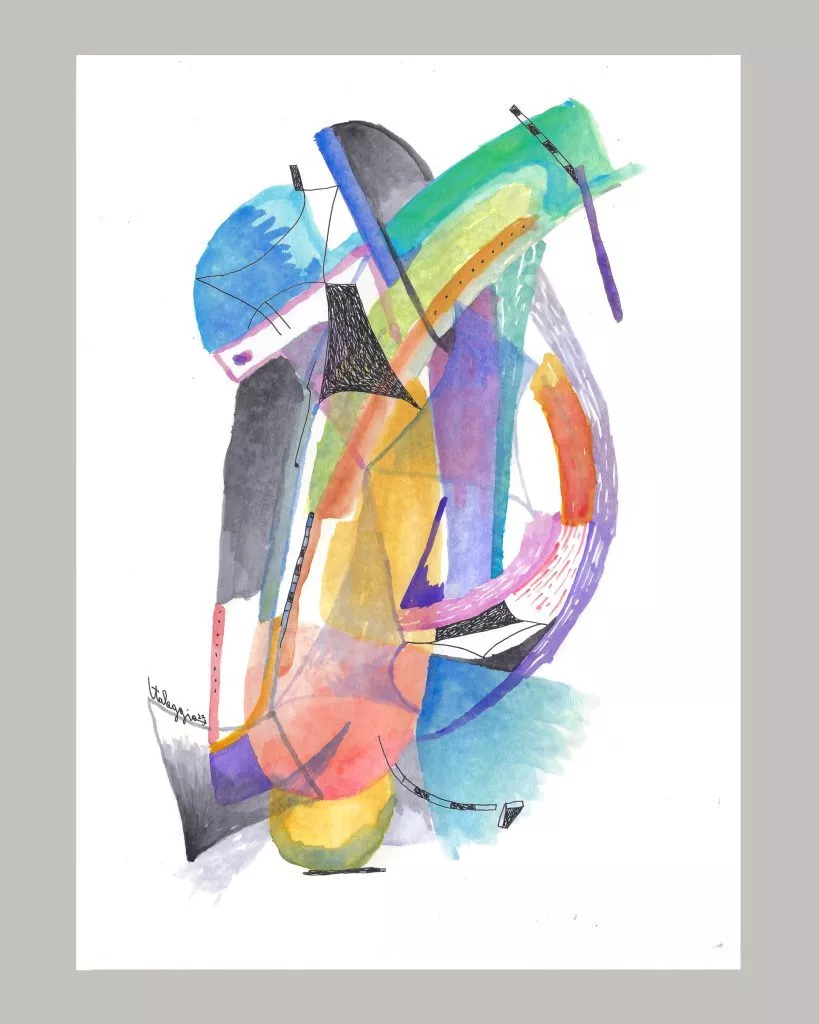
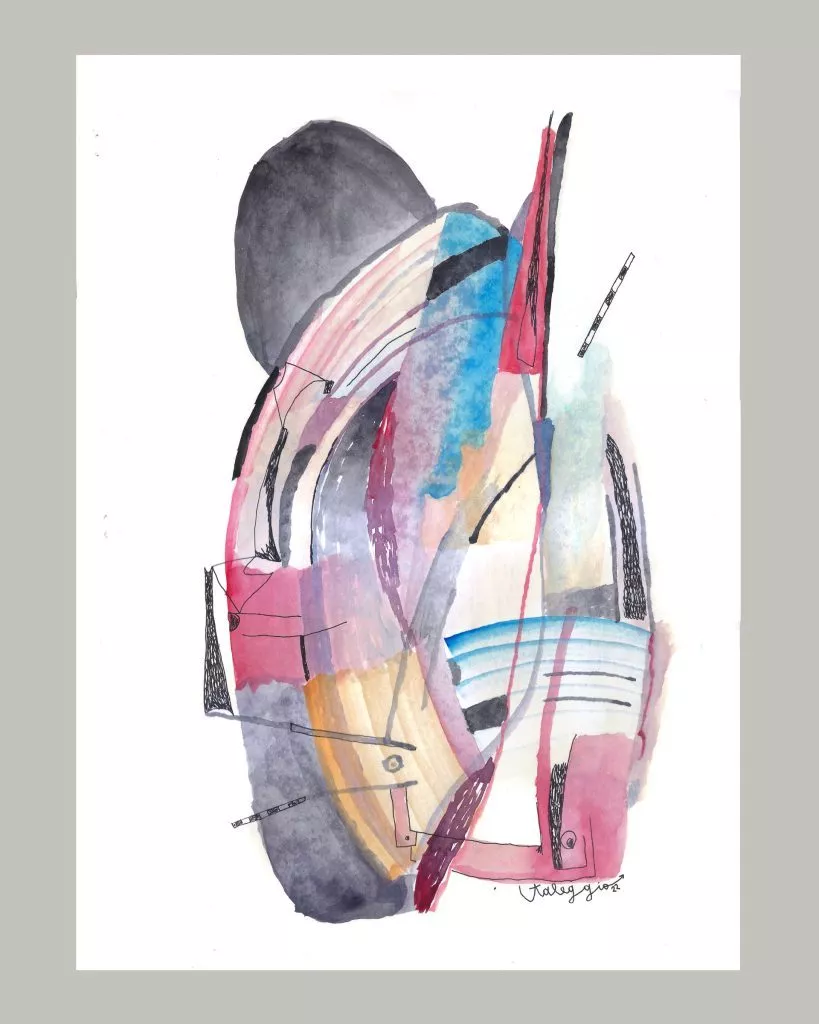
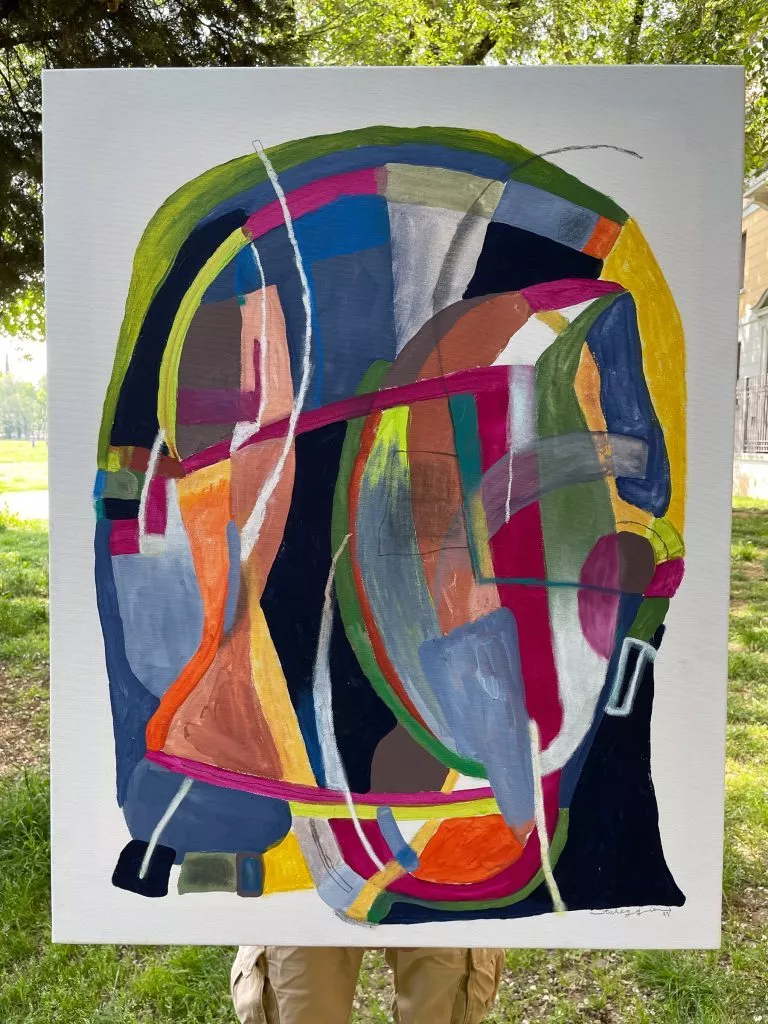
During his 20 years of practice of style writing and painting, Taleggio found his patterns, his working process, that he describes himself not as unique but personal. According to him, it is very difficult nowadays to create something new, anyway, the importance lays in finding an own way to paint and develop a personal visual language. Without graffiti writing, Taleggio says there will be no abstract work painted by him…letters were useful to learn to be fast, to sketch, to study, to search for an own style. It gave him a strong approach and a way to feel strength. According to the Italian painter, graffiti writing was the first thing where he could put all of himself, where he could develop, becoming part of his identity over the years. And he adds, it helped him to understand the reality around us.
https://www.instagram.com/_taleggio/
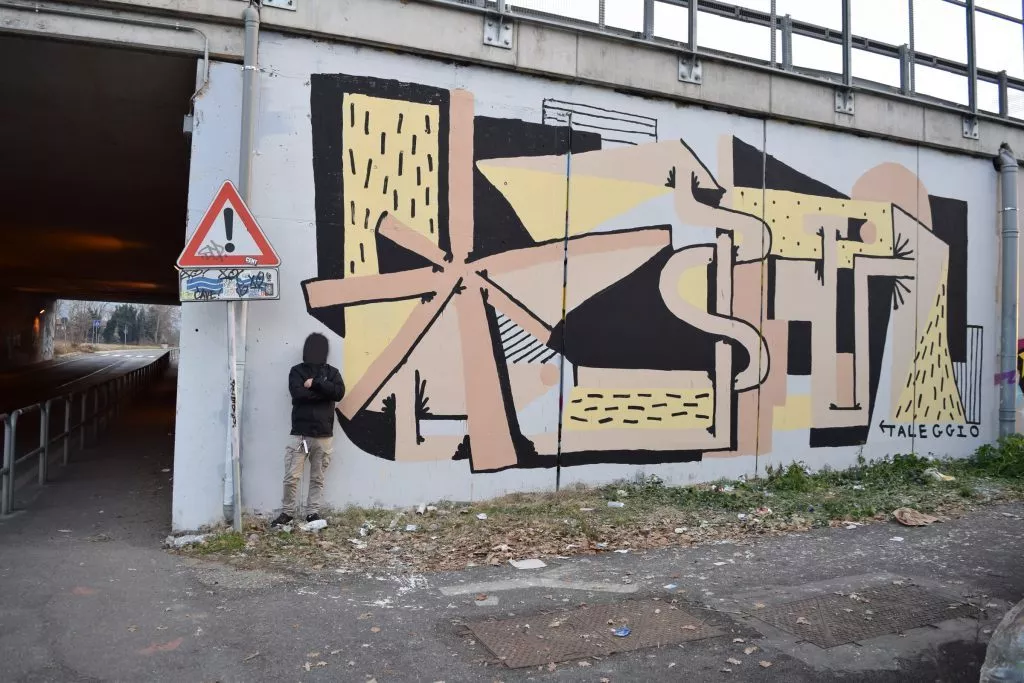
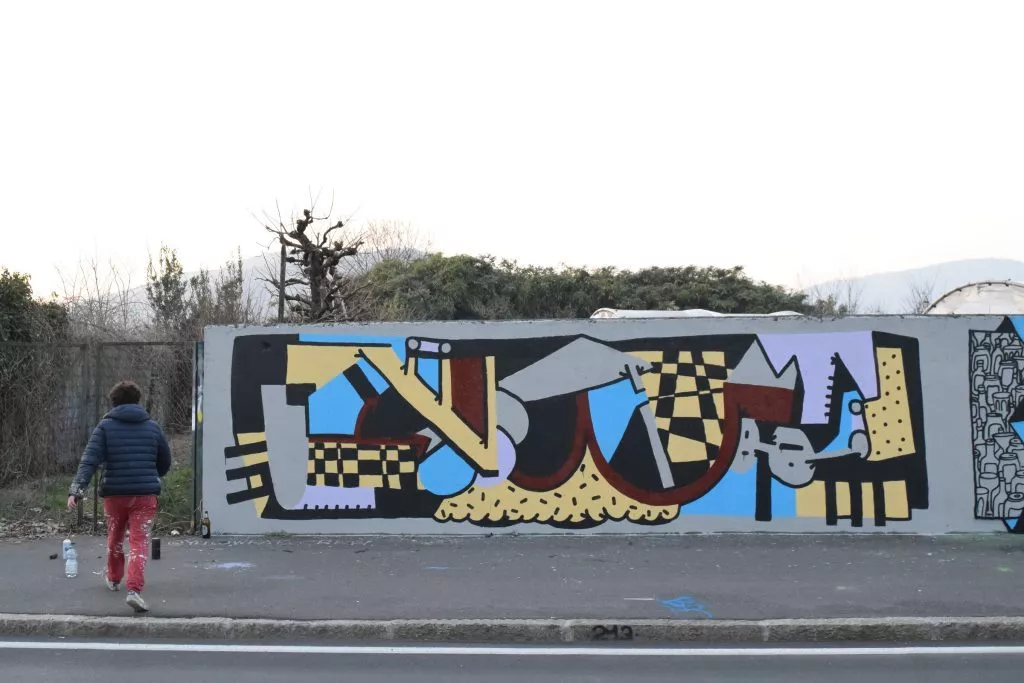
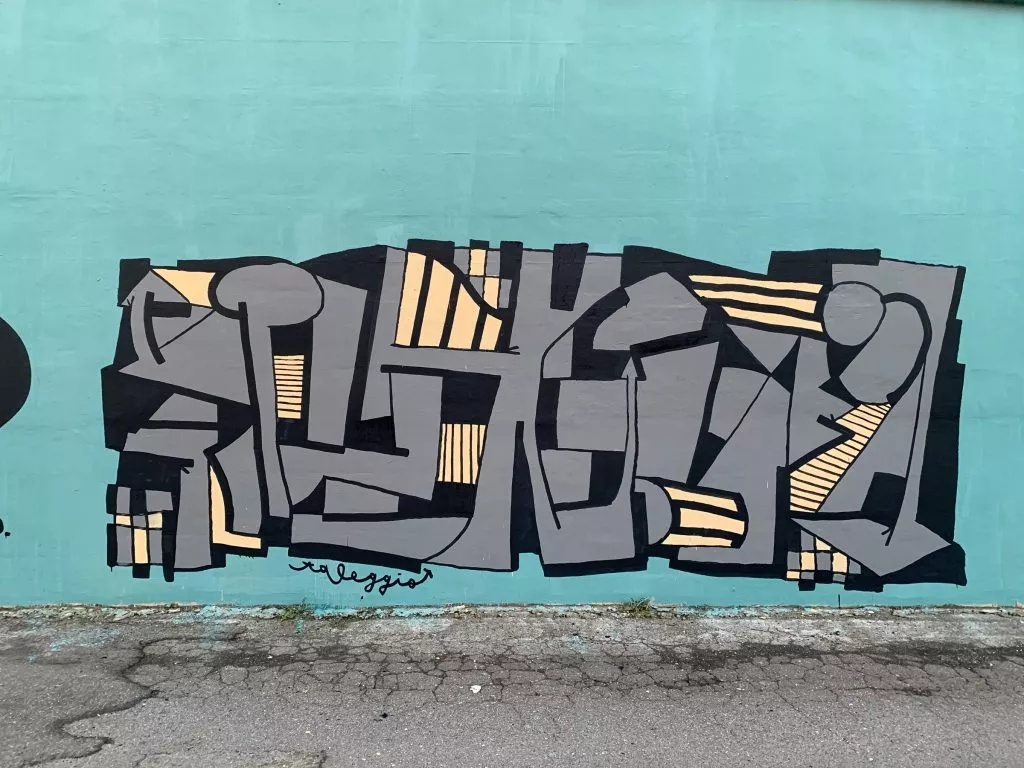
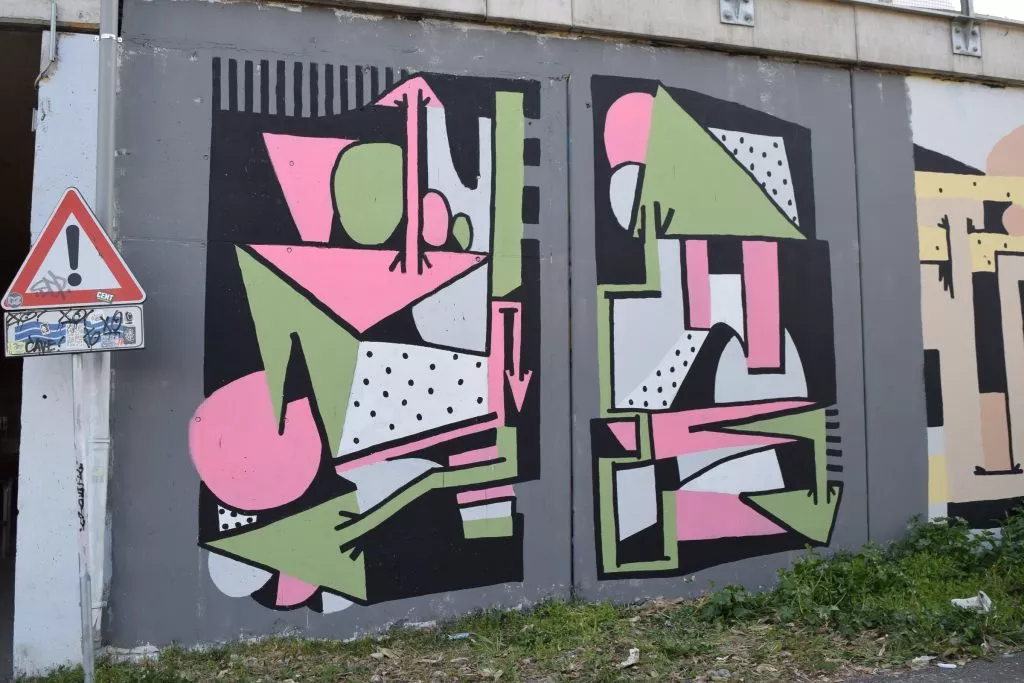
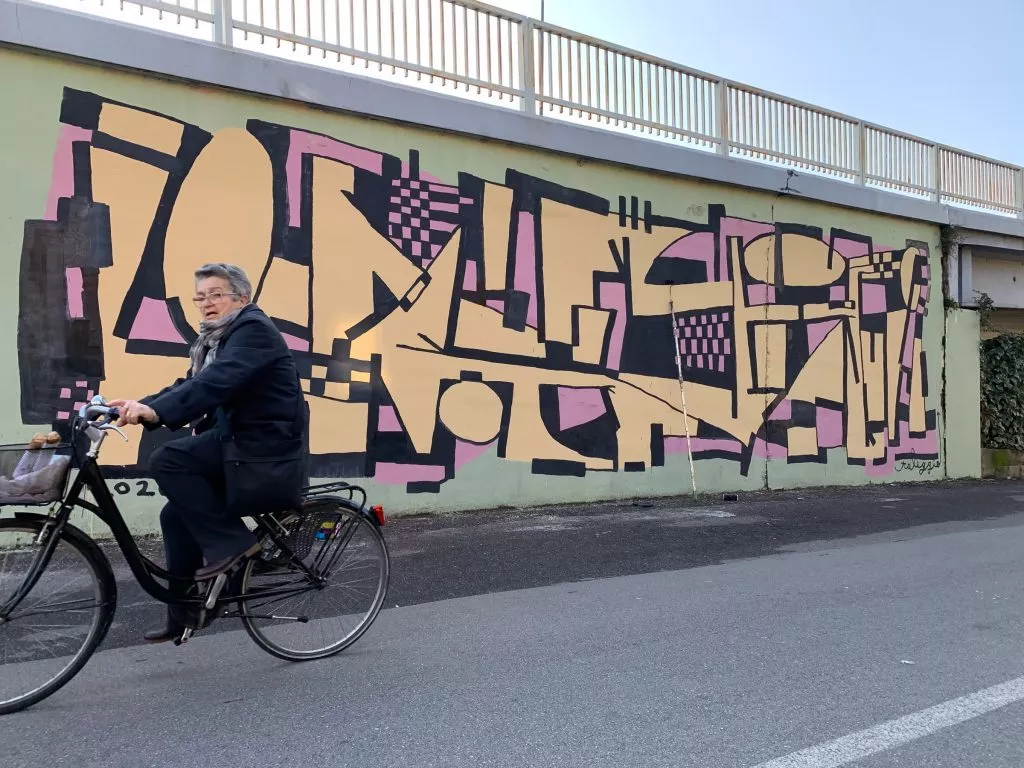
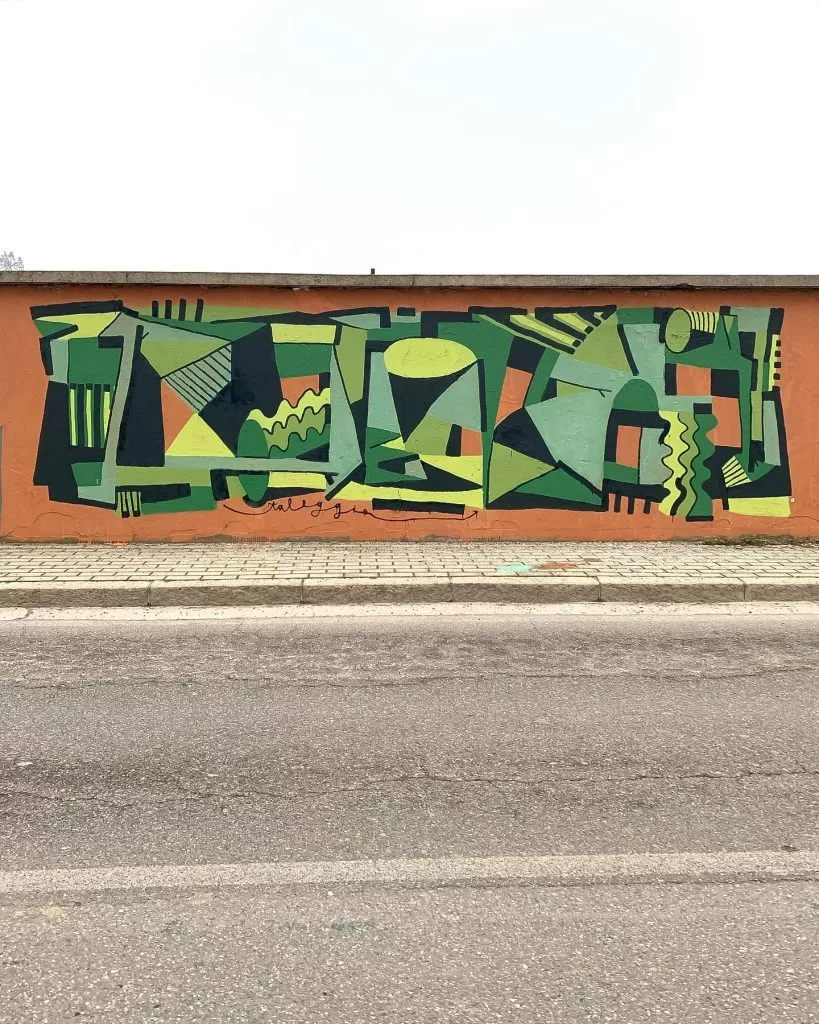
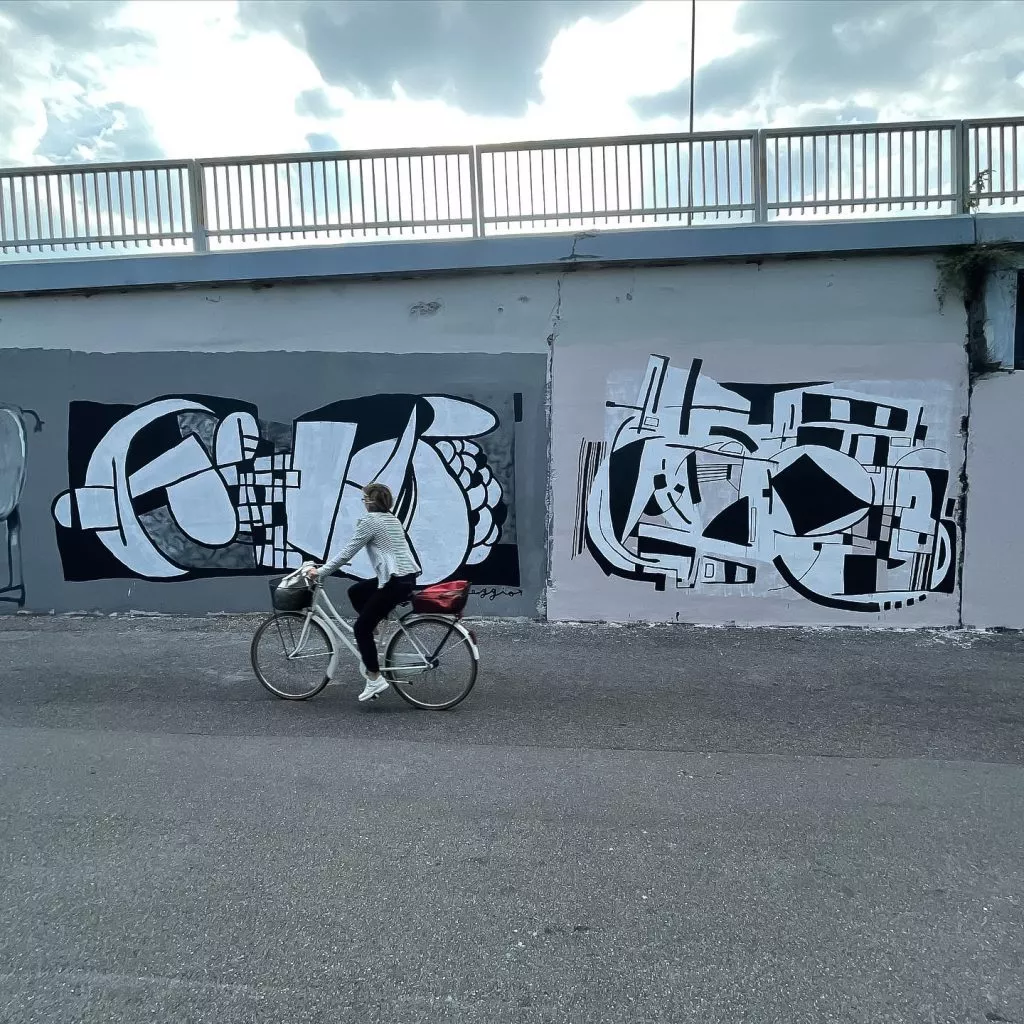
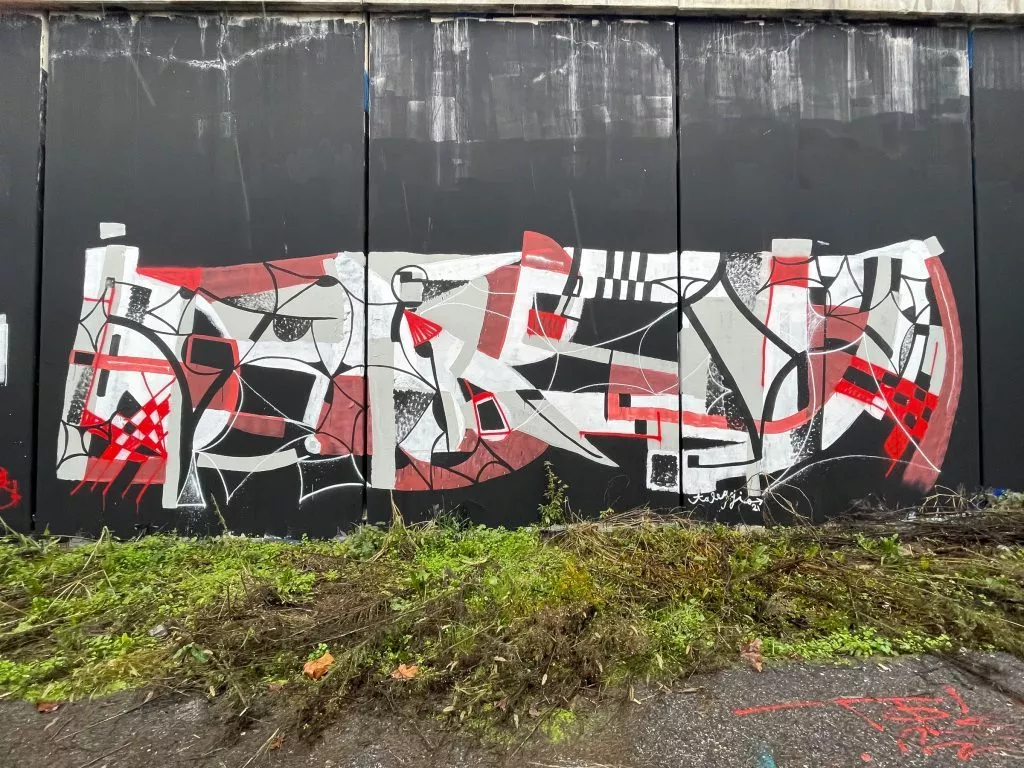
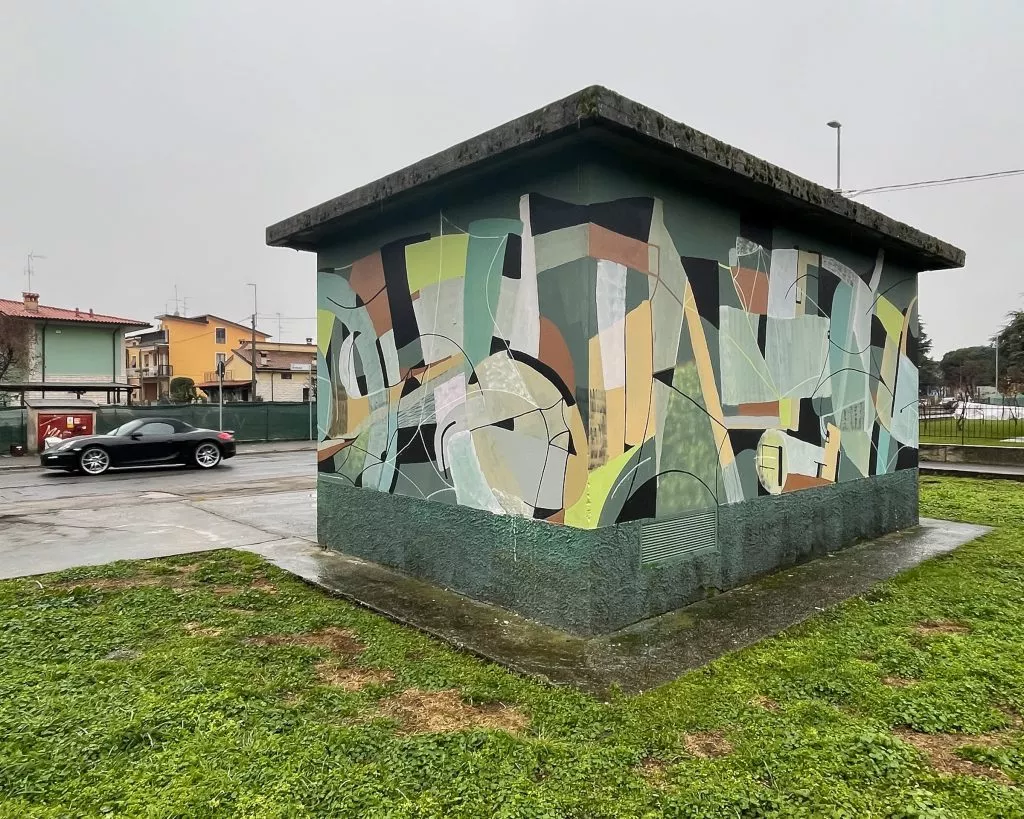
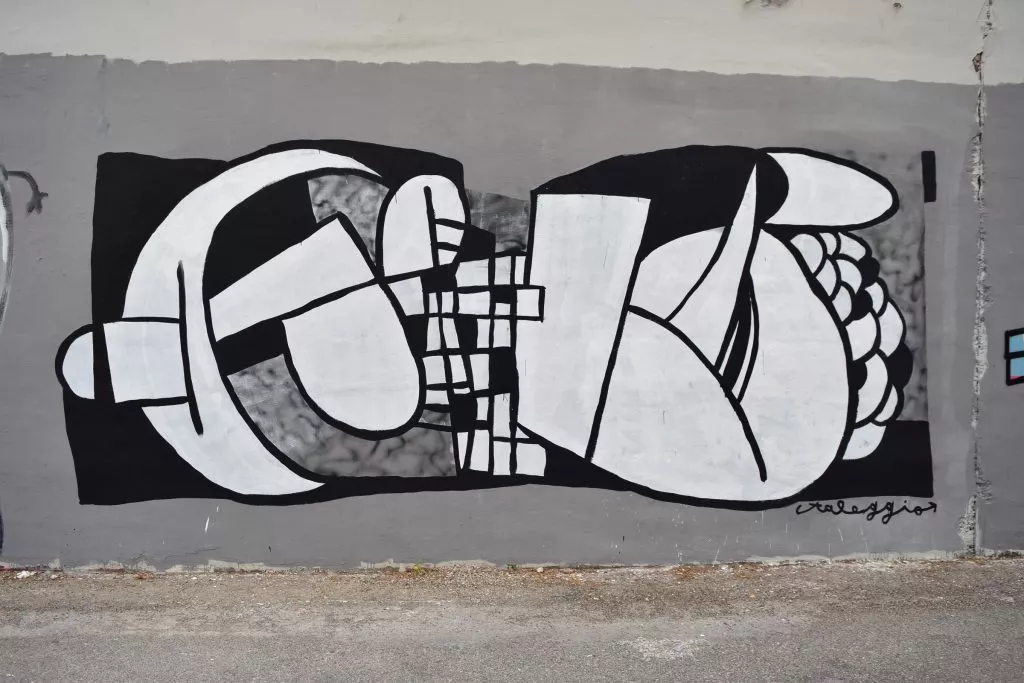
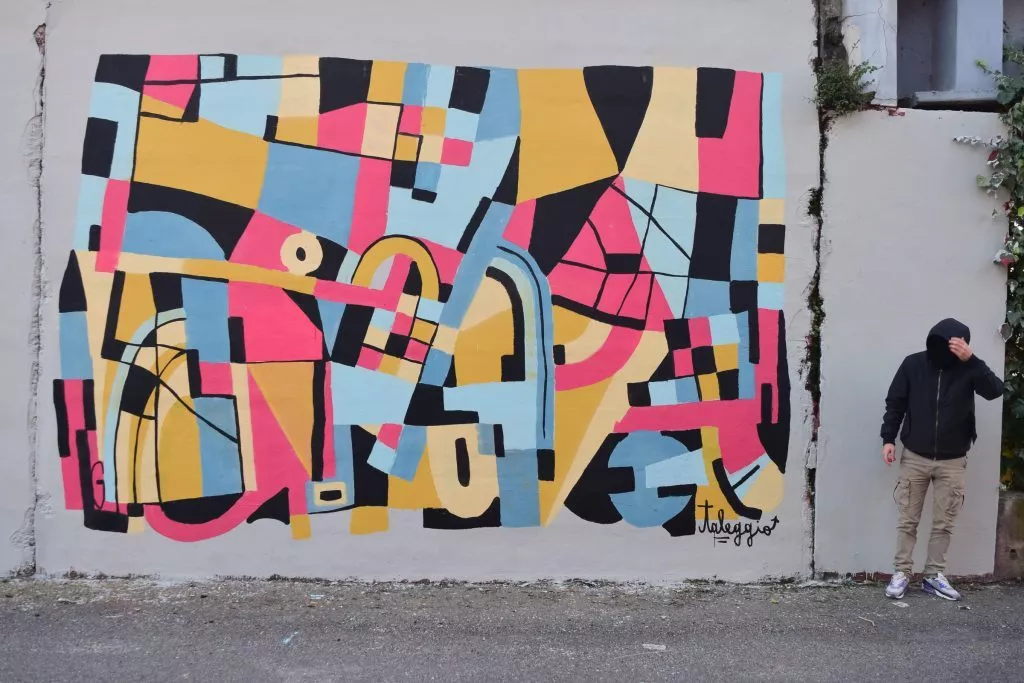
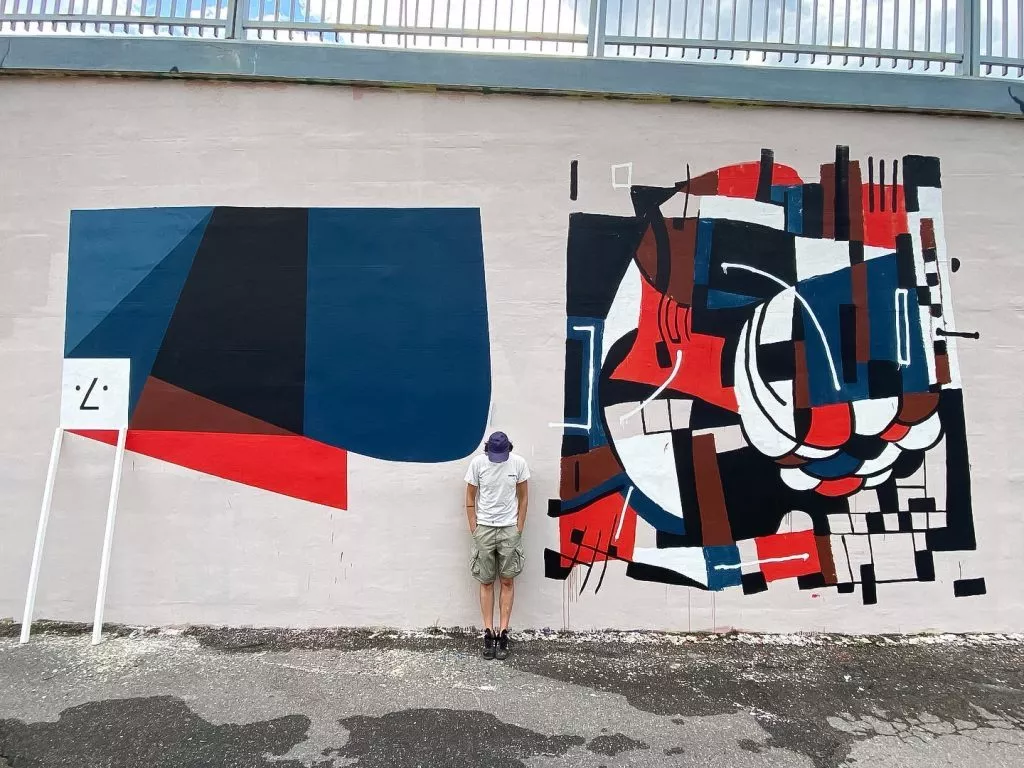
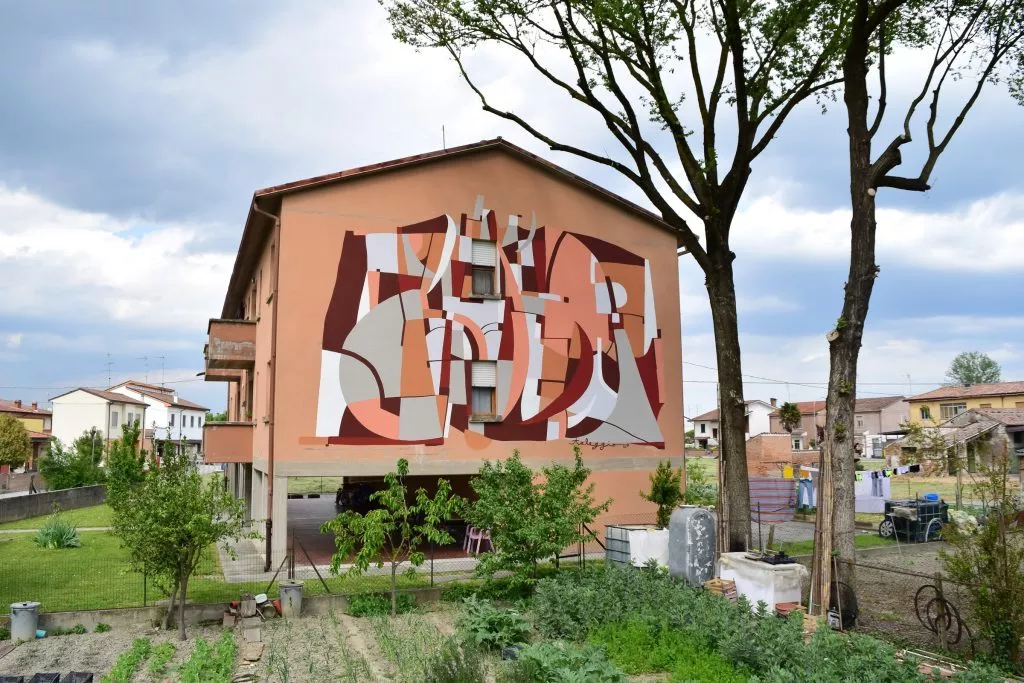
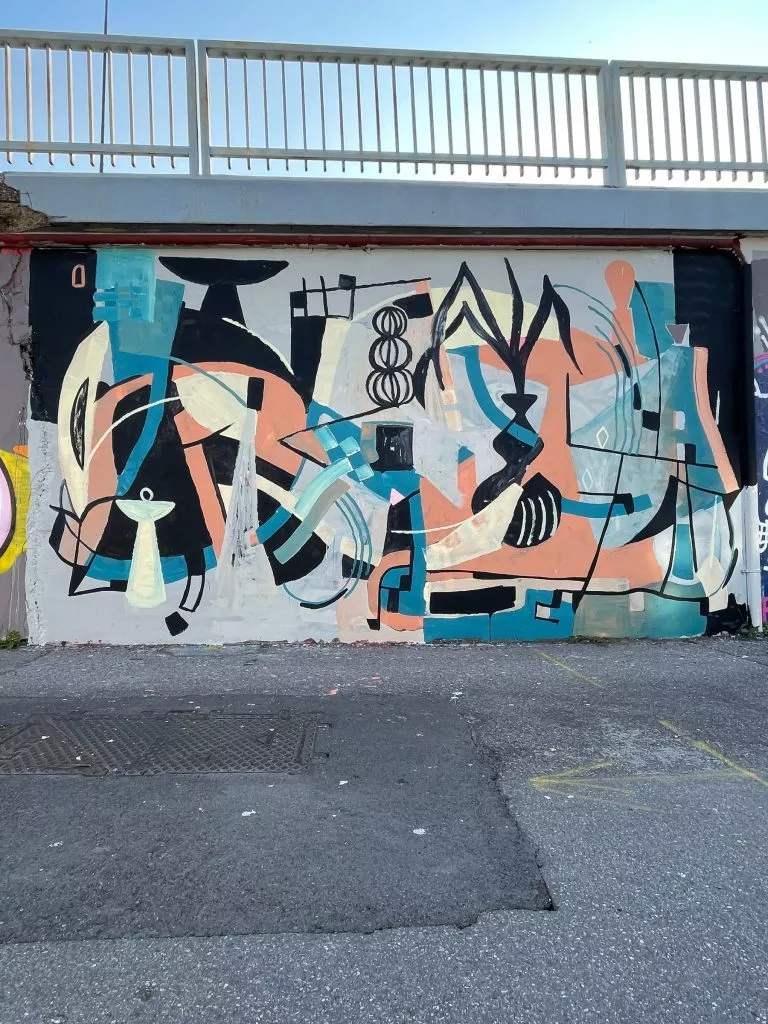
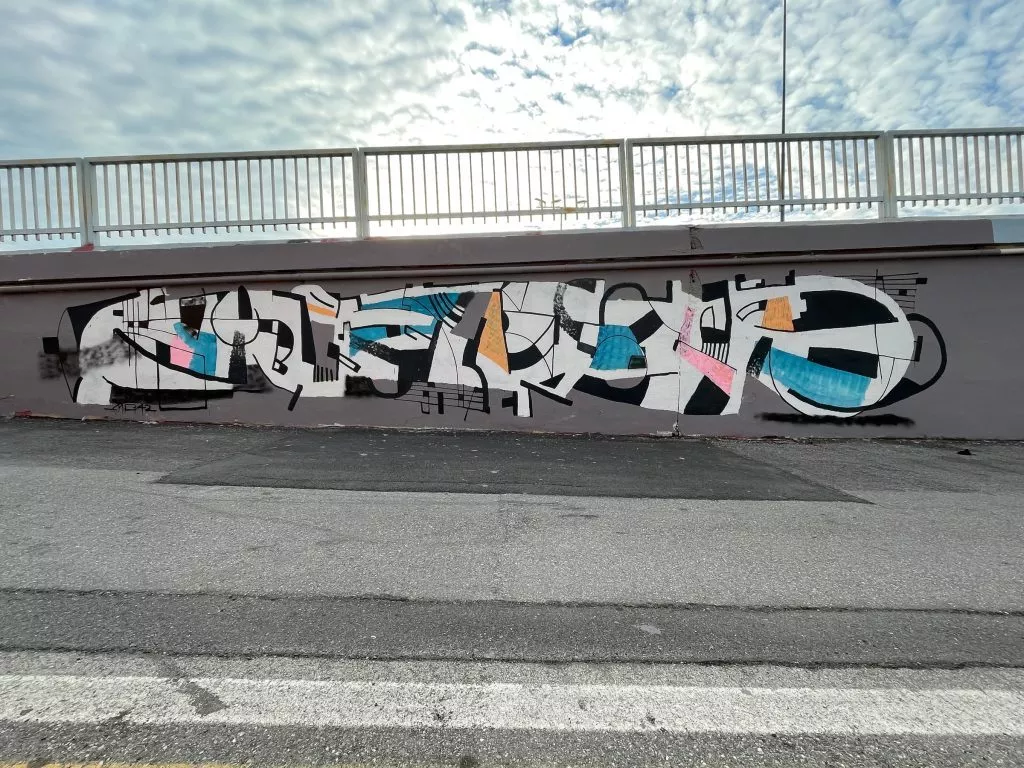
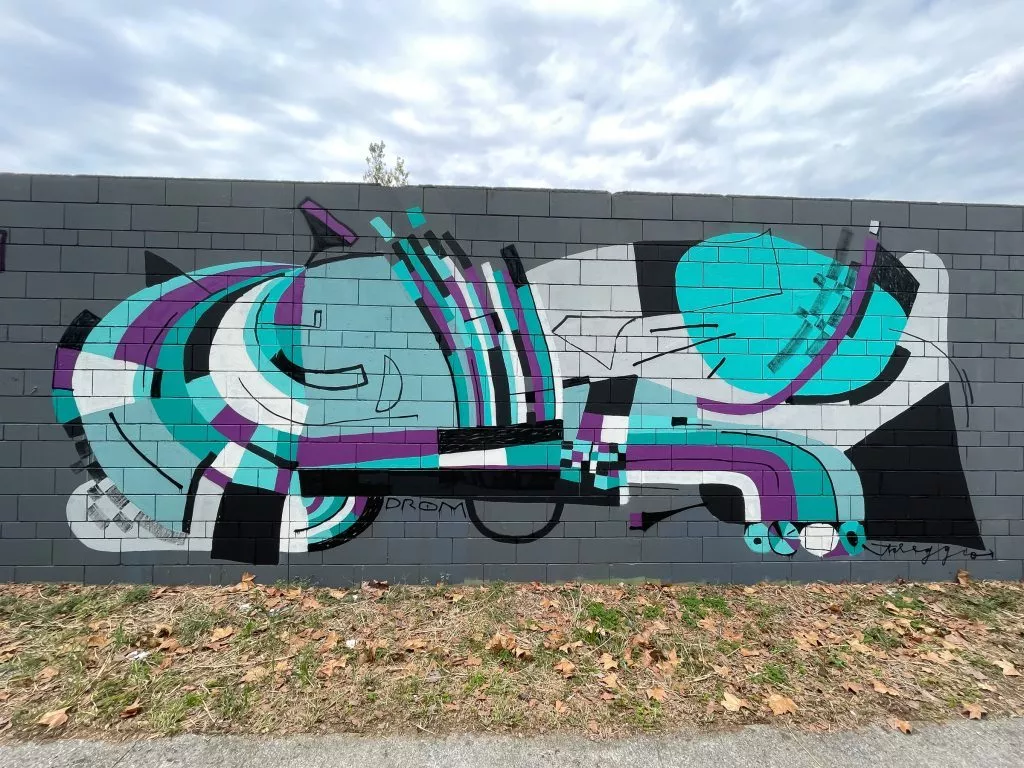
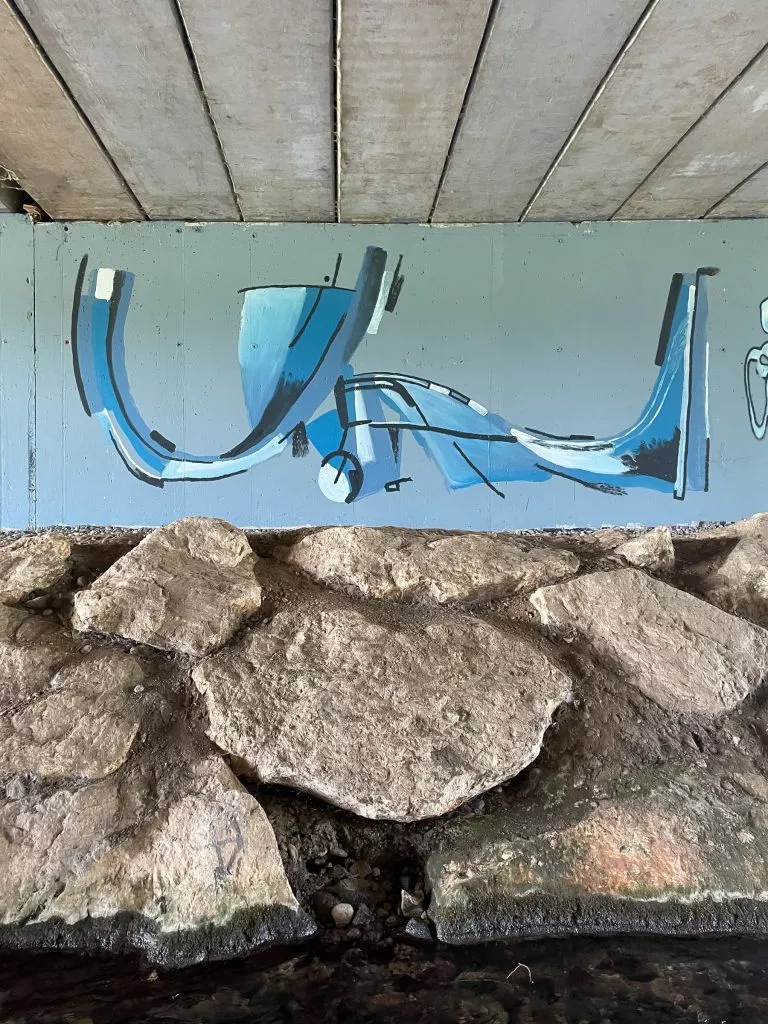
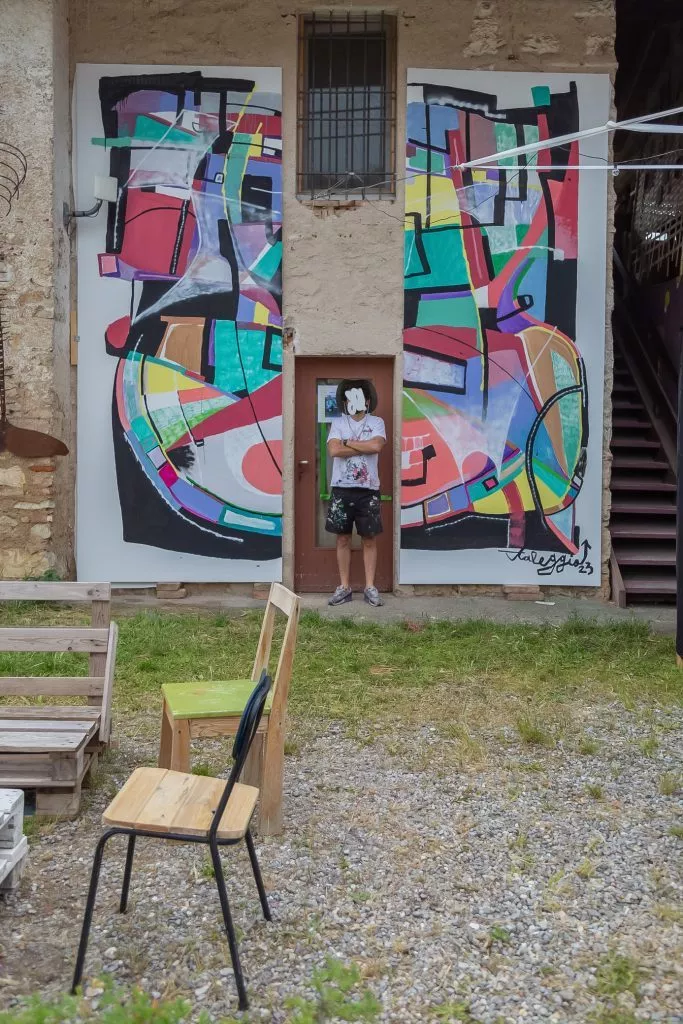
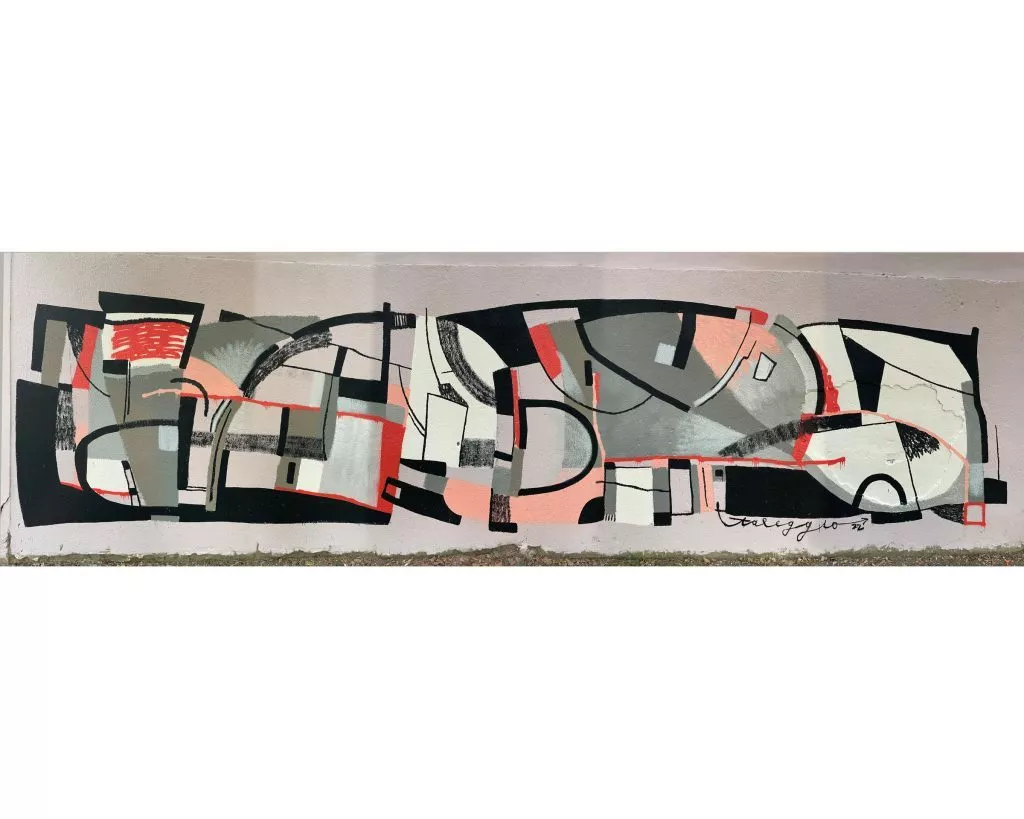
233 views
Categories
Tags:

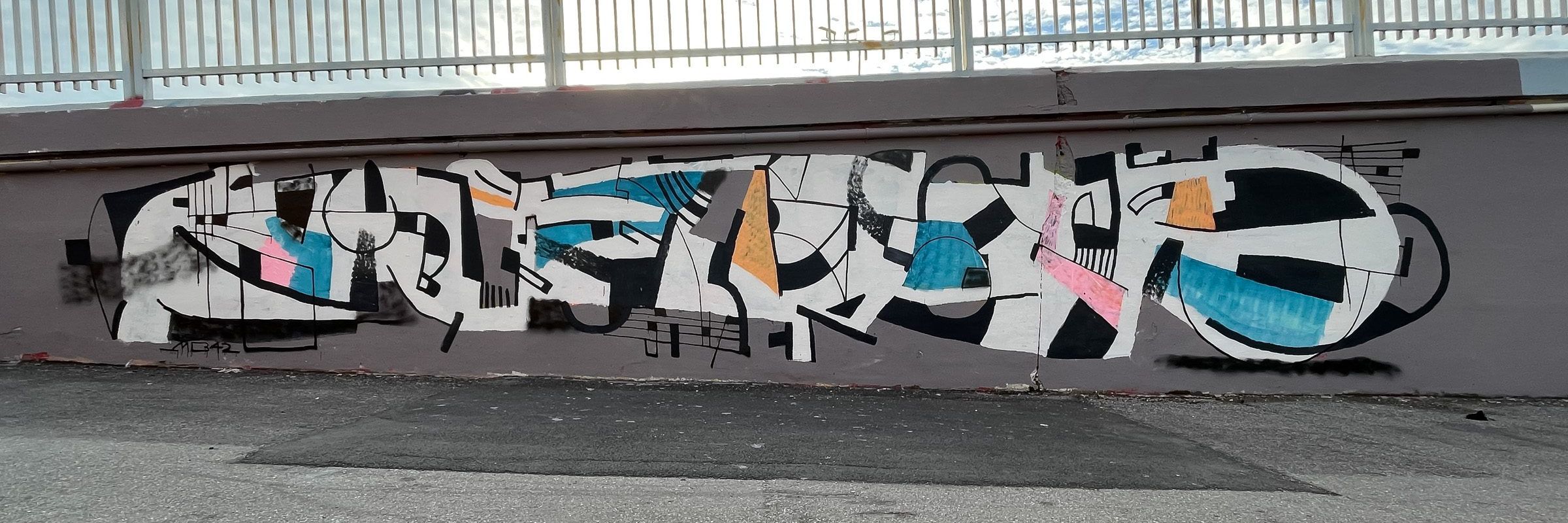

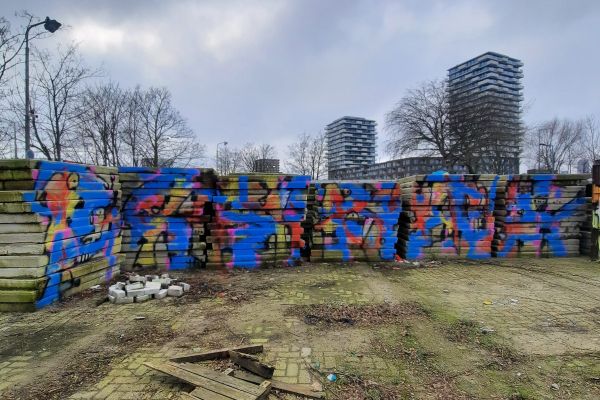
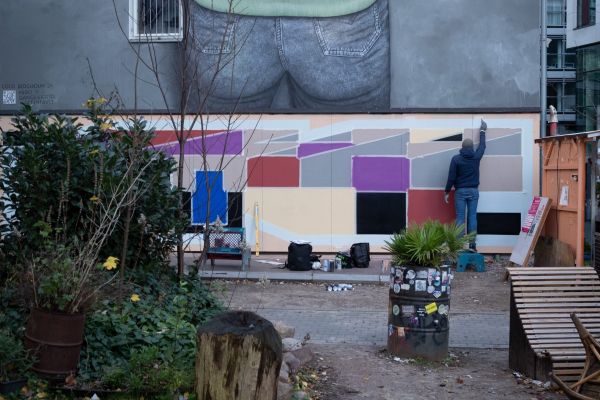
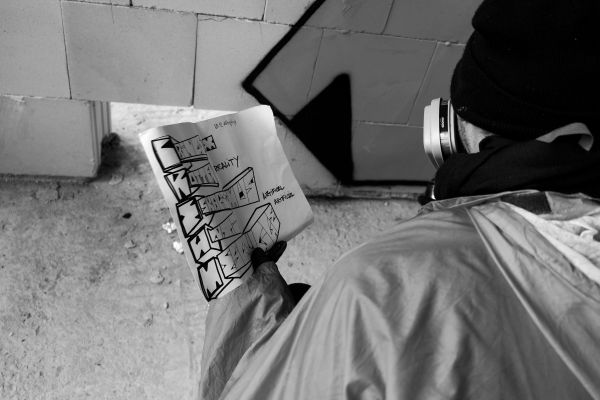
Leave a Reply